Articles
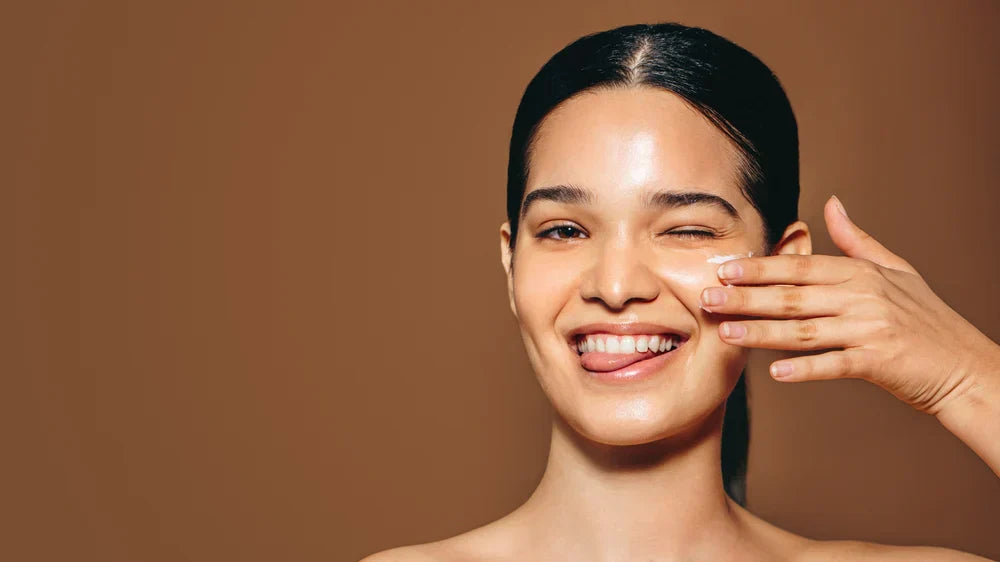
What Type of Moisturiser is Best for Dry Skin?
Key Takeaways
-
Blend Key Ingredients: A good hydrating moisturiser combines lipids for repair, humectants for hydration, and actives like niacinamide for soothing relief.
-
Refining Your Routine: Use a rich cream or balm for night-time repair, and a lighter gel-serum in the morning. Always apply to damp skin before your final SPF layer.
-
Sappe Clinic Collection: Our curated range includes powerful, science-backed formulas like SkinCeuticals Triple Lipid Restore, for deep, lasting hydration.
You know the feeling: your skin is rough, flaky, and constantly thirsty. It's that frustrating kind of dryness that regular cream just won't fix. But with the right products, you could wake up to a calm, dewy complexion and happy, resilient skin barrier. This buyer’s guide shares the essential ingredients you need and how to find the best moisturiser for dry skin in Australia.
Why Dry Skin Needs Special Care
Dry skin (xerosis) is a warning sign that your skin's protective barrier is compromised. Here’s why you need targeted care beyond basic hydration:
-
Compromised Barrier: Dryness is caused by insufficient water and essential lipids (natural oils) in the outer layer, a condition influenced by genetics, environment, and aging.
-
Accelerated Damage: When the barrier is weakened, moisture loss accelerates. This leads to persistent tightness, flaking, increased vulnerability to irritants, and premature aging.
-
The Healing Role: For dry skin, moisturisers work to replenish lost lipids (like ceramides) and attract water, protecting the barrier to reduce symptoms and restore long-term skin function.
3 Key Ingredients to Look for in a Moisturiser for Dry Skin
To find a good hydrating moisturiser, look for formulas built around three core types of ingredients. Here’s how they work together to restore health and prevent moisture loss:
-
Barrier Replenishers (Lipids): The building blocks of a healthy barrier. Key ingredients include ceramides, cholesterol, and fatty acids, which mimic the skin's natural lipid matrix to strengthen and repair the outer layer.
-
Moisture Magnets (Humectants): These ingredients attract and bind water to the skin. Look for hyaluronic acid and panthenol (vitamin B5) to boost hydration and improve the skin's smoothness and suppleness.
-
Healing Actives: Ingredients like niacinamide (vitamin B3) and antioxidants enhance the barrier function, reduce redness, and improve skin texture. Advanced formulas may also include actives like retinol for firmness and fine lines.
Types of Moisturisers for Dry Skin
Finding the best moisturiser for dry skin means choosing a formulation with the right texture to support your skin and daily routine:
-
Rich Creams and Balms: These dense, nourishing textures are packed with high concentrations of occlusive and emollient lipids. They’re ideal for very dry, mature, or damaged skin and are best used in the evening as a restorative overnight treatment.
-
Gel-Serums and Light Lotions: Primarily using humectants like hyaluronic acid, these hydrate without feeling heavy. They are suitable for normal-to-dry skin or for layering under SPF. These are perfect for your morning routine.
-
Targeted Barrier-Repair Treatments: These formulas deliver high levels of ceramides and cholesterol to restore the skin's natural lipid matrix. They actively improve long-term resilience and are great additions to a comprehensive nightly routine.
Shape Clinic Recommends
You know the science, now meet the solutions! These moisturisers come personally recommended by the Shape Clinic team for deep hydration and lasting barrier repair.
1. SkinCeuticals Triple Lipid Restore 2:4:2
This specialist cream restores the skin's lipid barrier by providing the ideal 2:4:2 ratio of natural lipids lost due to aging.
-
Key Benefits: Restores the lipid barrier, significantly improves hydration and firmness, and reduces visible signs of aging.
-
Key Ingredients: 2% Ceramides, 4% Cholesterol, and 2% Fatty Acids.
-
Best For: Dry, very dry, and aging skin requiring intensive barrier repair and nourishment.
2. SkinCeuticals A.G.E. Interrupter Advanced
This advanced treatment is designed to target the process of glycation, which is a key contributor to wrinkles, laxity, and overall visible aging.
-
Key Benefits: Reduces the look of deep wrinkles and laxity, boosts collagen production, and provides anti-glycation defence.
-
Key Ingredients: 12.6% Proxylane, Wild Fruit Flavonoids, and Niacinamide.
-
Best For: Dry, aging skin seeking to correct advanced signs of visible aging and improve overall radiance.
3. SkinBetter Science Trio Rebalancing Moisture Treatment
This powerful rebalancing formula works to restore natural moisture levels and improve the skin's long-term resilience and barrier function.
-
Key Benefits: Balances moisture levels for healthy skin function, improves skin resilience, and strengthens the lipid barrier.
-
Key Ingredients: A blend of Lipid Restoring Agents and Antioxidants.
-
Best For: Dehydrated and dry skin needing intense moisture balance and long-term barrier support.
4. SkinCeuticals Hydrating B5 Gel Serum
This lightweight, oil-free gel serum delivers concentrated hydration to improve the skin's moisture content and enhance overall suppleness.
-
Key Benefits: Instantly hydrates the skin, supports tissue repair, and enhances smoothness without adding heavy oil.
-
Key Ingredients: High concentrations of Vitamin B5 (Panthenol) and Hyaluronic Acid.
-
Best For: Dry, normal, and all skin types looking for a lightweight hydration boost for layering under creams.
5. SkinCeuticals Metacell Renewal B3 Cream
This nourishing daily cream focuses on improving skin texture, supporting barrier repair, and boosting skin renewal processes.
-
Key Benefits: Visibly improves surface texture and radiance, supports and repairs the skin barrier, and addresses early signs of aging.
-
Key Ingredients: Niacinamide (Vitamin B3), Retinol, and Glycerin.
-
Best For: Dry, sensitive, and aging skin needing combined barrier repair and cellular renewal.
Pro Tip: For optimal results, we recommend pairing a lighter hydrator like the Hydrating B5 Gel Serum in the morning and a rich repair cream like the Triple Lipid Restore 2:4:2 or A.G.E. Interrupter Advanced at night.
How to Apply a Moisturiser for Dry Skin
Achieving the best results is all about timing and technique. The right approach ensures the skin barrier locks in that all-important moisture:
-
Start Gentle: Cleanse with a gentle, hydrating formula to protect your skin's natural oils.
-
Boost Hydration: Apply a serum (Hyaluronic Acid/B5) immediately after cleansing for an extra moisture layer.
-
Apply to Damp Skin: Use your dry skin moisturiser immediately after cleansing or bathing. Apply with gentle upward strokes to trap maximum water content.
-
Seal and Protect: Always finish your morning routine by layering a broad-spectrum SPF over the moisturizer to prevent UV damage.
Final Thoughts: Choosing the Best Moisturiser for Dry Skin
Stop treating that tight, dry feeling with generic cream! The solution is upgrading to active formulas rich in Ceramides and Hyaluronic Acid for true barrier repair. By choosing the right product, you aren't just hydrating. You're building resilient, healthy, and comfortable skin for life.
Ready to invest in a moisture barrier that actually lasts? Explore Shape Clinic's expert-recommended dry skin moisturisers online now.
Additional Reading
---
About the Author
Nicky Lurie is a skin therapist with over 20 years of experience, specialising in medical aesthetics. She supports both our surgical and aesthetic services by delivering customised skincare solutions using medical-grade treatments. Nicky’s expertise ensures clients receive effective, evidence-backed products tailored to their specific needs, from acne to ageing.
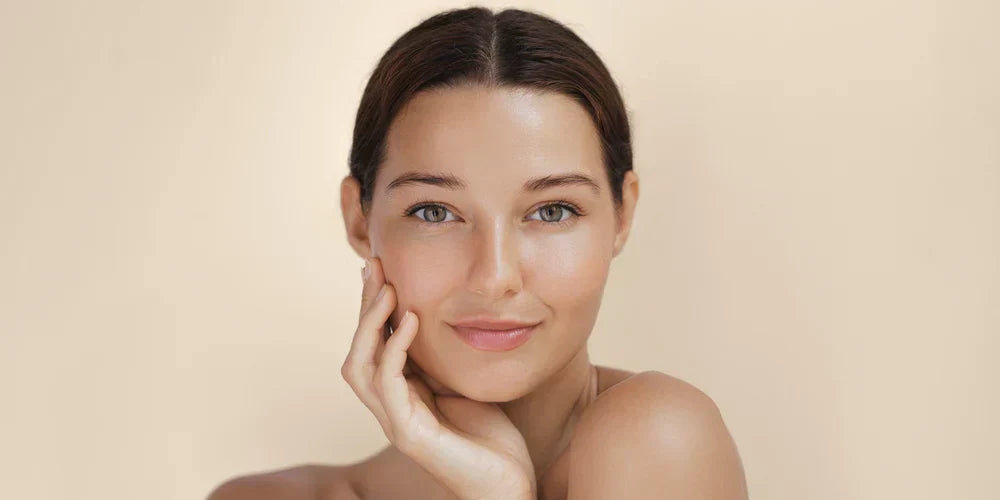
What is a Gentle Cleanser? The Essential Secret to Calmer, Clearer Skin
Key Takeaways
-
Barrier Protection: A gentle cleanser is essential! It removes impurities without stripping the lipid barrier, preventing irritation and rebound oiliness.
-
Healing Ingredients: The best gentle cleanser includes hydrators like Hyaluronic Acid and Ceramides while being free of harsh irritants (alcohol, fragrance).
-
Universal Balance: Gentle formulas are the optimal choice for all skin types (including acne-prone), as they maintain the balance necessary for clear, calm skin.
Many people think a cleanser should leave skin feeling tight and squeaky clean to be effective. But that uncomfortable, stripped feeling is actually a sign of damage, not cleanliness.
The truth is, protecting your skin barrier starts with finding a gentle cleanser that removes impurities while keeping your complexion calm and balanced. This article explains what makes a gentle facial cleanser and how to find the best choice for your skin.
Why Choose a Gentle Cleanser?
A gentle face cleanser is not a luxury, but a necessity for long-term skin health. Here's why you should consider adding one to your routine:
-
Protects the Skin Barrier: A gentle cleanser is mild and non-stripping, removing impurities without causing micro-tears, irritation, or damage to your skin's vital natural barrier.
-
Stops Oil Rebound: By preserving natural moisture, gentle cleansing prevents the cycle where harsh stripping triggers the skin to overproduce oil, leading to increased breakouts and inflammation.
-
Universal Suitability: While essential for sensitive skin, rosacea, and eczema, a gentle formula supports clearer, balanced skin for all skin types, both oily and dry.
What Are the Key Ingredients in a Gentle Cleanser?
To identify the best gentle cleanser, check the ingredient label. These are the components that soothe and hydrate while cleansing effectively:
-
Mild Cleansing Agents: Look for mild surfactants or fatty alcohols (like cetyl and stearyl). These allow the gentle facial cleanser to remove impurities without stripping natural moisture.
-
Essential Hydrators: Include Hyaluronic Acid (draws moisture) and Ceramides (replenishes the lipid barrier). These counteract potential dryness during washing.
-
Calming Botanicals: Ingredients like Aloe Vera, Chamomile, or Green Tea help immediately calm redness and irritation post-cleanse.
Why Is a Gentle Cleanser Important for Sensitive Skin?
For anyone prone to redness or reactions, using a gentle cleanser for sensitive skin is the most crucial step in preventing daily discomfort:
-
Stops Aggravation: Harsh ingredients like alcohol or fragrances actively trigger irritation and inflammation. Gentle formulas cleanse without initiating.
-
Reinforces the Barrier: Gentle cleansers prioritise the skin's lipid barrier, making sensitive skin stronger, less reactive, and better protected against external irritants.
-
Prevents Flare-Ups: They are essential for managing chronic conditions like rosacea or eczema, without disturbing the delicate balance required to keep flare-ups under control.
Can a Gentle Cleanser Help with Clogged Pores?
Absolutely! A gentle cleanser for clogged pores is often more effective than harsh formulas because it clears buildup without causing rebound irritation:
-
Gentle Deep Clean: A good gentle face cleanser removes oils and impurities without damaging the skin barrier.
-
The Right Actives: Look for gentle formulas with actives like Salicylic Acid (BHA) or Tea Tree Oil. These manage oil and break down clogs without causing inflammation.
-
Maintains Balance: By removing buildup without stripping, the cleanser maintains the delicate moisture balance necessary for clear skin, stopping the cycle of irritation and congestion.
How to Use a Gentle Cleanser in Your Skincare Routine
To maximise the benefits of your gentle facial cleanser without causing irritation, we recommend this simple technique:
-
Cleanse Twice Daily: Use your best gentle cleanser every morning and night as the foundational step of your daily routine.
-
Gentle Application: Apply to damp skin. Massage the cleanser using gentle circular motions for longer than 1 minute. Never scrub, as friction causes irritation.
-
Seal and Protect: After rinsing, always follow immediately with a suitable moisturiser. This locks in hydration and protects your skin's barrier.
The Best Gentle Cleansers for Every Skin Type
Finding the best gentle cleanser means matching the formula's texture and ingredients to your skin:
-
Oily Skin: Choose gel or light foaming formulas. These should contain BHA for deep-cleaning and Glycerin to control oil without stripping.
-
Dry Skin: Look for creamy or oil-based gentle cleansers. Prioritise rich hydrators like Hyaluronic Acid and barrier-repairing Ceramides.
-
Sensitive Skin: Select fragrance-free, hypoallergenic formulas. A gentle cleanser for sensitive skin should have minimal ingredients and soothing agents like Chamomile to protect the barrier.
The Final Verdict: Is a Gentle Cleanser Right for You?
Stop chasing that squeaky-clean feeling, it's ruining your barrier! Switching to a gentle cleanser is the easiest upgrade you can make for happier, healthier skin, whether you're dealing with constant sensitivity or stubborn breakouts. It maintains balance where harsh products cause chaos, making it truly essential for everyone.
To experience the benefits of a gentle cleanser, explore Shape Clinic's curated range of cleansers online now.
Additional Reading
---
About the Author
Nicky Lurie is a skin therapist with over 20 years of experience, specialising in medical aesthetics. She supports both our surgical and aesthetic services by delivering customised skincare solutions using medical-grade treatments. Nicky’s expertise ensures clients receive effective, evidence-backed products tailored to their specific needs, from acne to ageing.
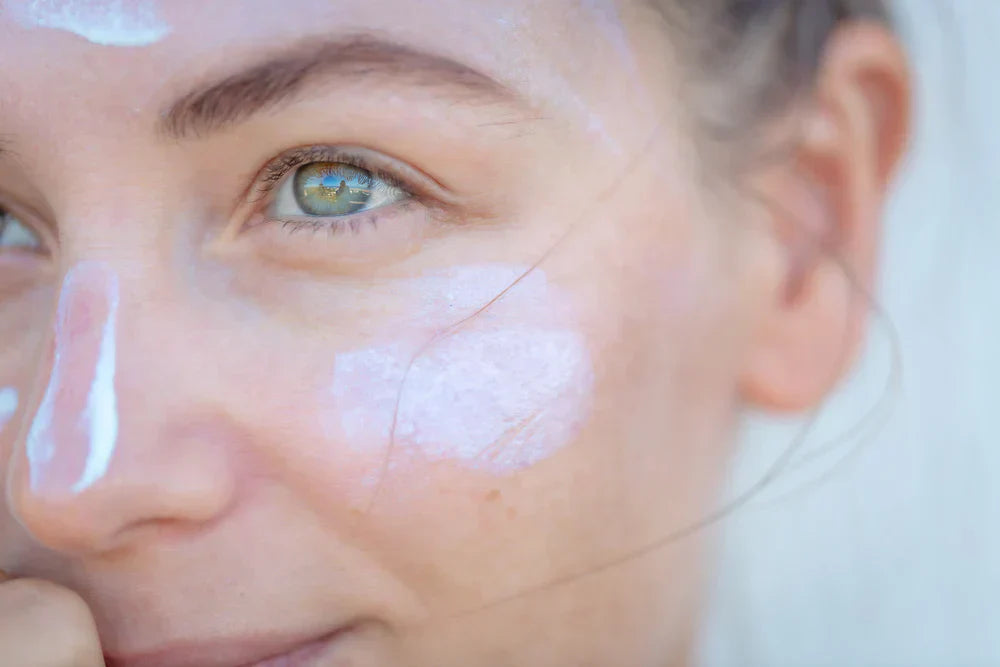
Are Moisturisers with SPF Effective?
Key Takeaways
-
Volume is Key: Protection hinges on volume. Under-applying is a common mistake, which drastically reduces SPF 30 protection to as low as SPF 5–7.
-
Master the Method: To achieve the full labelled defence, always use the "two-finger rule" for volume and apply the product thoroughly to the entire face and neck.
-
Know the Limits: Ideal for daily, incidental exposure, but not enough for prolonged outdoors or sweating. Use a dedicated, water-resistant sunscreen for those activities.
That morning sun streaming through your office window might feel harmless, but year-round UV exposure is one of the biggest drivers of aging. For many of us, the solution is simple and convenient: a daily moisturiser with SPF to cover all the bases in one step.
But is this 2-in-1 approach effective, or are you sacrificing protection for speed? We're breaking down the science to tell you if your SPF moisturiser is giving your skin the defence it deserves.
What is a Moisturiser with SPF?
A moisturiser with SPF is a handy hybrid that blends daily hydration with crucial sun protection:
-
Dual Function: This product supports the skin barrier with hydration while simultaneously using UV filters to shield against sun damage.
-
Formulation Focus: An SPF moisturiser is typically lighter than sunscreens, prioritising a comfortable texture to encourage easy, year-round application.
-
Protection Level: Products must be "broad-spectrum" (UVA/UVB) with common ratings ranging from SPF 15 to SPF 30.
How Effective is SPF in a Moisturiser?
The all important question: Is moisturiser with SPF enough? The answer hinges entirely on application volume, not just the number on the bottle.
-
Under-Application Problem: Labelled SPF requires the "two-finger rule." People typically use half this volume, reducing SPF 30 effectiveness to as low as SPF 5–7.
-
The Coverage Gap: Combination products are often applied too quickly. This results in incomplete coverage, leaving vulnerable high-risk areas (like eyelids and temples) exposed.
-
When It's Insufficient: Ideal for incidental, daily exposure, but not enough for prolonged outdoors, intense sweating, or beach time. Use a separate, dedicated, water-resistant sunscreen for that.
Benefits of Using a Moisturiser with SPF
Incorporating a combination product offers some great advantages that simplify your mornings and support long-term skin health:
-
Ultimate Convenience: Combining two essential steps into one streamlines your routine, making consistent sun defence simple. For minimalists, this allows your sunscreen as moisturiser to complete the entire regimen.
-
Essential Anti-Aging: Consistent use of a moisturiser sunblock can be an effective anti-aging strategy. It protects collagen from daily UV exposure, preventing wrinkles, fine lines, and pigmentation.
-
Improved Skin Health: Daily application reduces long-term sun damage risk. The hydrating formula ensures your skin barrier remains strong and comfortable while being shielded from environmental stressors.
How to Choose the Best Moisturiser with SPF
Finding the best moisturiser with SPF means matching its protective qualities and formulation to your skin:
-
Prioritise High Protection: Always choose a moisturiser with SPF of at least 30. Crucially, confirm it is broad-spectrum (UVA/UVB).
-
Match to Your Skin Type: For oily or acne-prone skin, choose lightweight, non-comedogenic gels. For dry skin, look for rich creams with hydrators like Hyaluronic Acid and Ceramides.
-
Look for Extras: Seek formulas with antioxidants to combat environmental damage.
-
Choose Your Finish: Select a formulation (sheer lotion, cream, or tinted moisturiser) that best suits your daily routine and desired look.
How to Apply a Moisturiser with SPF for Maximum Protection
The single biggest factor determining effectiveness is the amount you apply. Follow these steps to ensure your SPF moisturiser application delivers full protection:
-
Use Full Volume: Dispense along two fingers (the "two-finger rule") for the face and neck. Massage the full amount gently.
-
Final Layer: Apply as the last step before makeup. Allow 1–2 minutes to settle.
-
Reapply Outdoors: For prolonged exposure, layer a dedicated, water-resistant sunscreen as moisturiser substitute. Reapply every two hours.
Shape Clinic Recommends
For effective sun protection, Shape Clinic loves the following products that combine superior skincare with high SPF defence. Each offers a unique texture and finish to cater to different skin needs:
SkinCeuticals Ultra Facial Defense SPF 50
-
Best for: Daily broad-spectrum protection with a lightweight formula.
-
Why We Love It: This ultra-lightweight sunscreen provides high UVA and UVB protection with SPF 50. It's formulated to be non-greasy and absorb quickly, making it perfect for layering under makeup. With antioxidant protection from environmental stressors, this product ensures your skin stays protected and hydrated without feeling heavy.
-
Perfect for: All skin types, especially those looking for a non-comedogenic option that won’t clog pores or irritate sensitive skin.
AIRYDAY Dreamscreen SPF 50
-
Best for: A glowing, sun-kissed complexion with high SPF protection.
-
Why We Love It: AIRYDAY Dreamscreen provides SPF 50 protection while offering a lightweight, creamy formula that gives your skin a radiant finish. Whether you’re looking for a subtle golden glow or a deeper bronzed look, this product shields your skin from harmful UV rays and enhances your complexion with a natural, sun-kissed finish.
-
Perfect for: Those wanting to add a golden or bronzed touch to their skin with the added benefit of daily sun protection.
Available in:
-
Golden Glow – For a radiant, golden finish, perfect for medium to deeper skin tones.
-
Bronze Glow – For a rich, bronzed glow, ideal for all skin tones, especially to enhance a tan or create a sunkissed look.
Final Thoughts: Are SPF Moisturisers Enough?
The hot take? Yes, your moisturiser with SPF is an essential daily choice, but only if you use the full "two-finger" amount every single time. While it's perfect for incidental sun exposure and anti-aging, remember, convenience ends where the beach day begins. For extended outdoor time, you must layer a dedicated, water-resistant sunscreen.
When you're ready to upgrade your daily defence, explore Shape Clinic's curated range of moisturisers with SPF online now.
Additional Reading
---
About the Author
Nicky Lurie is a skin therapist with over 20 years of experience, specialising in medical aesthetics. She supports both our surgical and aesthetic services by delivering customised skincare solutions using medical-grade treatments. Nicky’s expertise ensures clients receive effective, evidence-backed products tailored to their specific needs, from acne to ageing.
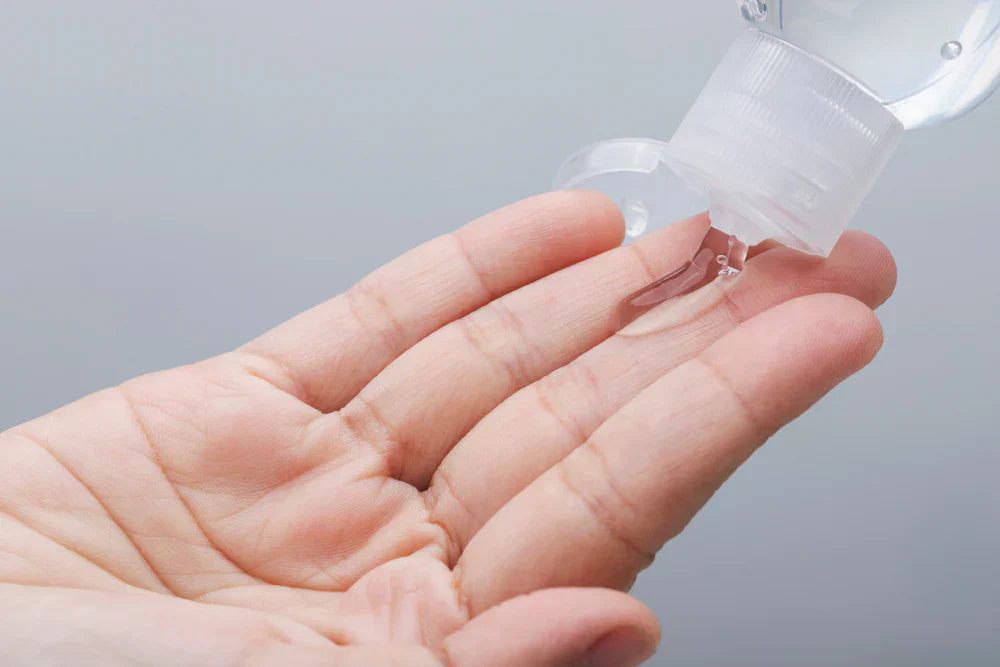
Are Gel Cleansers Good for Your Skin?
Key Takeaways
-
The Perfect Balance: Gel cleansers use surfactants and micelles for a deep cleanse. Humectants like glycerin ensure non-stripping hydration.
-
Ideal for Oil & Sensitivity: Their lightweight, residue-free formula is the preferred choice for managing oil and congestion without irritating sensitive skin.
-
Tailored Results: Match the formula to your needs. Use exfoliants like salicylic acid for oily skin or soothing botanicals like aloe vera for reactive skin.
Struggling to find a cleanser that deep cleans without irritating your skin? It’s a common dilemma that leads many to ask: Are gel cleansers good for my skin? These refreshing formulas are often the perfect solution. They gently remove oil and impurities without stripping moisture, making them ideal for oily or sensitive skin. In this guide, we’ll show you why gel cleansers work so well and how to use them for the best results.
What is a Gel Cleanser?
The effectiveness of a cleansing gel comes directly from its carefully balanced, water-based formulation. The key components include:
-
Mild Surfactants: These are the primary cleansing agents responsible for attracting and lifting impurities.
-
High Water Content: Forms the base of the product, which contributes to its refreshing and lightweight texture.
-
Humectants: Ingredients like Glycerin are added to help maintain the skin's natural moisture content and prevent dryness.
-
Thickening Agents: Used to give the cleanser its characteristic clear, viscous, gel consistency.
-
Soothing Compounds: Often includes botanicals like aloe vera or targeted actives to support and calm the skin while cleansing.
What Does a Gel Cleanser Do?
A cleansing gel achieves its deep-cleaning action and balancing effect through this scientific process:
-
Attraction: Mild surfactants in the gel use their dual (oil and water-attracting) nature to target impurities on the wet skin surface.
-
Encapsulation: These surfactants form micelles, tiny structures that surround and trap oily residues, dirt, and pollutants.
-
Removal: The encapsulated impurities (micelles) are easily rinsed away with water, providing a deep clean without residue.
-
Hydration Support: Simultaneously, humectants like glycerin actively help the skin retain moisture, ensuring the delicate lipid barrier is preserved during the cleanse.
Benefits of Using Gel Cleansers
Here's how the unique formulation of gel cleansers translates to real benefits for your skin's health:
-
Pore-Refining Cleanse: Provides a deep clean that removes oil and pollution from pores while remaining non-stripping.
-
Superior Oil Control: Highly effective at managing sebum, making a cleansing gel for oily skin ideal for preventing breakouts.
-
Soothing Hydration: Humectants like glycerin deliver a soothing dose of hydration to the surface while purifying the skin.
-
Non-Irritating: The lightweight texture and mild formula are gentle enough for daily use on reactive and sensitive skin.
How to Use a Cleansing Gel for Best Results
To get the pore-clearing and hydrating benefits from your cleansing gel, use this precise technique:
-
Dampen & Dose: Wet your face with lukewarm water. Dispense a pea-sized dollop of the cleansing gel.
-
Emulsify & Apply: Rub the gel between your palms to activate it, then gently massage your face in circular motions for 30 to 60 seconds.
-
Rinse Completely: Rinse thoroughly with lukewarm water until all residue is gone to prevent irritation.
-
Pat & Finish: Gently pat dry with a clean towel. Immediately follow with your serum and moisturiser to lock in hydration.
Pro Tip: Always avoid hot water, as it strips skin. Choose a gel cleanser formula tailored to your skin type for best results.
Choosing the Right Gel Cleanser for Your Skin Type
Matching your gel cleanser to your skin type is key to a healthy, balanced clean:
-
Oily Skin: Choose a cleansing gel for oily skin with exfoliants like salicylic acid to unclog pores and manage sebum effectively.
-
Sensitive Skin: Look for gentle formulas with soothing botanicals like aloe vera or chamomile to reduce irritation.
-
Dry Skin: Pick a hydrating formula with humectants like glycerin or hyaluronic acid to maintain moisture while cleansing.
-
Combination Skin: Select a balanced gel cleanser that manages the oily T-zone without stripping moisture from drier cheek areas.
Shape Clinic's Top Gel Cleanser Recommendations
Our experts curated these two formulas to meet the needs of sensitive and oily skin while maintaining the delicate skin barrier.
-
SkinCeuticals Simply Clean Gel Cleanser: A gentle yet effective formula that removes impurities and maintains your natural barrier. It's perfect for sensitive or oily skin, cleansing deeply without drying.
-
SkinBetter Science Cleansing Gel: This soothing, sulfate-free gel provides a mild but thorough cleanse. It is ideal for sensitive or compromised skin, effectively removing makeup and leaving skin fresh and balanced.
The Final Verdict: Are Gel Cleansers Good for Your Skin?
The answer is a clear yes! Gel cleansers balance deep, effective cleansing with non-stripping hydration. Their ability to control excess oil while using humectants makes the gel cleanser an ideal foundation for both oily and sensitive skin.
To achieve that balanced clean your skin deserves, explore the expert-approved Shape Clinic skin collection today.
Additional Reading
-
What is a Gentle Cleanser? The Essential Secret to Calmer, Clearer Skin
-
Are Cream Cleansers Good? Find the Solution for Your Skin Type
---
About the Author
Nicky Lurie is a skin therapist with over 20 years of experience, specialising in medical aesthetics. She supports both our surgical and aesthetic services by delivering customised skincare solutions using medical-grade treatments. Nicky’s expertise ensures clients receive effective, evidence-backed products tailored to their specific needs, from acne to ageing.
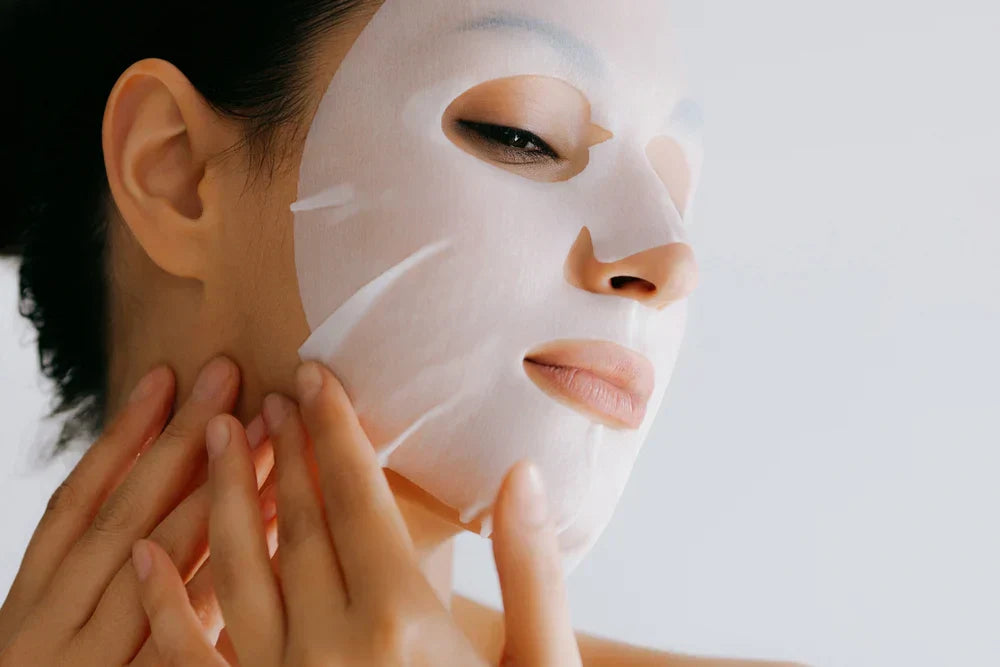
Do You Moisturise After a Face Mask?
Key Takeaways
-
Seal the Benefits: Moisturiser must be applied after the mask. It acts as a protective seal, locking in actives and preventing Transepidermal Water Loss.
-
Follow the Sequence: The correct order is Cleanse → Mask → Serum → Moisturiser. Applying moisturiser before the mask blocks ingredient absorption.
-
Match Your Product: Choose a moisturiser that complements the mask (like soothing ceramides after detoxifying) to restore balance and maximise benefits.
Do you know the final, crucial step to locking in all the benefits of your face mask? The answer lies in the ongoing debate over post-mask moisturising, which confuses even seasoned skincare enthusiasts. We're setting the record straight, showing you exactly what to apply after your mask and why this step is essential for a radiant, healthy glow.
What Happens to Your Skin After a Face Mask?
Once a mask is removed, your skin is in a unique, highly receptive yet vulnerable state due to the occlusive effect:
-
Compromised Barrier: The outer layer is weakened, potentially increasing Transepidermal Water Loss (TEWL).
-
Transient Dehydration: A sudden shift from high humidity can temporarily disrupt skin moisture factors.
-
High Permeability: Skin is primed to absorb subsequent active ingredients and hydration more effectively.
-
Sebum Response: Occlusion may trigger elevated sebum secretion as the skin attempts to restore its barrier balance.
To counter these effects, a final moisturiser is critical to seal in actives and promote rapid barrier repair.
Should You Moisturise Before or After a Face Mask?
To get the most out of your mask, you need to understand the fundamental rule of skincare layering: masks fit into a specific place in the routine to maximise results.
Why Moisturise After a Face Mask?
You should always apply moisturiser after the face mask is complete. Most masks deliver a high concentration of active ingredients and intense hydration. Once the mask is removed, there is a risk these benefits will be short-lived due to evaporation or breakdown.
The moisturiser is essential because:
-
It Seals the Benefits: Moisturiser acts as a "sealant," preventing Transepidermal Water Loss (TEWL) and locking in the mask's potent ingredients.
-
It Supports the Barrier: Emollients in the moisturiser reinforce the skin's lipid layer, prolonging the mask's effects.
Applying moisturiser before a mask is discouraged, as the barrier created can block the deep penetration of the mask's active ingredients, severely reducing its efficacy.
How to Build a Proper Face Mask Routine
A successful face mask routine relies on the correct sequence for maximum absorption and sealing. Here’s the routine we recommend.
-
Cleanse & Prep: Always start with a thoroughly cleansed face. Gentle exfoliation is recommended beforehand for maximum ingredient penetration.
-
Apply Mask: Apply your mask and adhere strictly to the time specified on the packaging to avoid irritation or drying.
-
Tone & Serum: After rinsing/removing, apply serum. Serums should be applied after the mask but before moisturiser onto the highly permeable skin.
-
Moisturise & Seal: The moisturiser is the essential final step. It seals both the serum and the mask benefits in place, preventing moisture loss.
A Note on Mask Types: Post-mask care varies. If using a specific "sleeping mask," you can usually skip the final moisturiser as it is designed to replace your night cream.
What to Apply After a Face Mask
To achieve best results and support your skin barrier, knowing what to apply after your face mask is key.
Choosing the Right Moisturiser
-
After Detox/Exfoliating Masks: Use a calming, barrier-repair cream (with ceramides) to stabilise and soothe.
-
After Hydrating/Sheet Masks: Apply a richer cream or balm. This acts as an occlusive sealant to prevent the actives from evaporating.
Placement of Other Treatments
-
Eye Cream: Apply after your serums but before your facial moisturiser.
-
Facial Oil: Use as the very last step in your routine, after moisturiser, to create a final occlusive seal.
The Benefits of Moisturising After a Face Mask
Moisturising is the most vital step in your post-mask routine, as it converts those immediate, temporary effects into long-lasting skin benefits:
-
Seals Actives & Prevents TEWL: The moisturiser acts as an occlusive barrier, locking in the mask's ingredients and reducing Transepidermal Water Loss.
-
Rapid Barrier Recovery: It re-establishes the skin's lipid barrier and provides emollients to soothe, rapidly restoring balance, especially after deep-cleaning masks.
-
Prolonged Radiance: By preventing water and nutrient loss, moisturising ensures your skin remains plump, hydrated, and radiant long after the mask is removed.
Face Clinic Recommends: Hyaluronic Acid Face Mask
To deliver highly concentrated actives during the masking stage of your routine, we highly recommend the Medipeau Hyaluronic Acid Face Sheet Mask, developed by our resident Dr. Danae Lim:
-
Clinical Use: This is the specific mask treatment used in our clinic post-treatments for its immediate cooling, calming, and intense hydration.
-
Superior Hydration: Lightweight microfibre infused with Sodium Hyaluronate ensures superior, long-lasting moisture retention.
-
Key Actives: Features Caffeine (reduces redness) and Ceramide (seals moisture), alongside Centella Asiatica (firming) and Adenosine (radiance).
-
Post-Mask Integration: Once removed, massage the rich residue into your skin. This acts as your high-potency serum step, which you must then seal with your final moisturiser to lock in all the benefits.
Conclusion: Maximising Your Face Mask Benefits
So, the big question is settled: moisturising is absolutely the crucial final step! Think of it as the ultimate seal that locks in all your mask's hard work and prevents hydration from vanishing. Just adding this simple rule to your face mask routine is the secret to ensuring those active ingredients keep delivering the plump, radiant complexion you're aiming for.
Ready to enhance your skincare routine? Shop Shape Clinic's expert-approved products for a balanced, glowing look.
Additional Reading
---
About the Author
Nicky Lurie is a skin therapist with over 20 years of experience, specialising in medical aesthetics. She supports both our surgical and aesthetic services by delivering customised skincare solutions using medical-grade treatments. Nicky’s expertise ensures clients receive effective, evidence-backed products tailored to their specific needs, from acne to ageing.
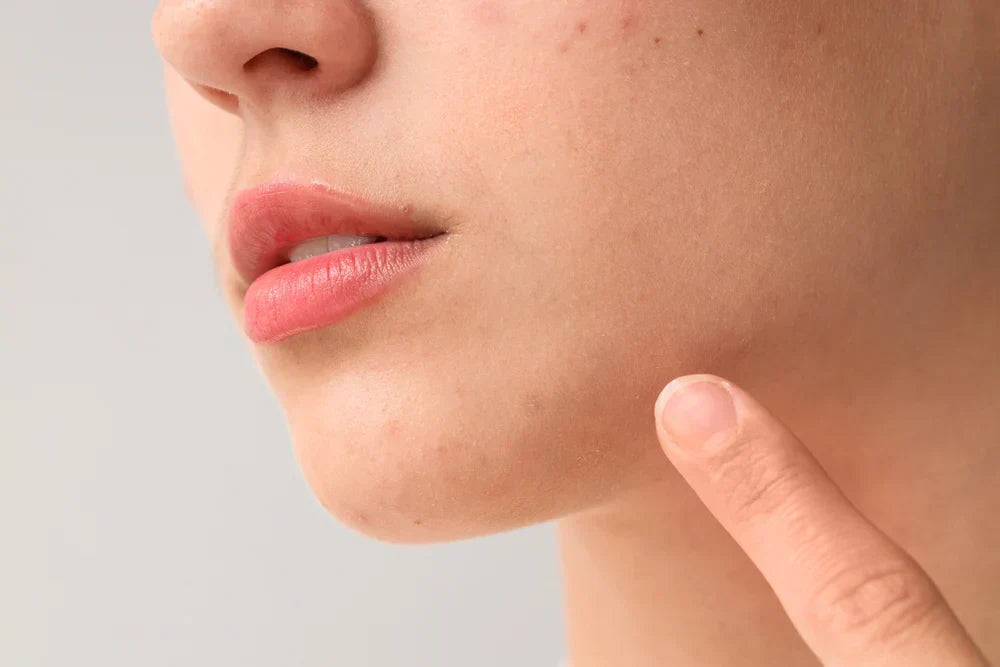
Are Cleansers Good for Acne?
Key Takeaways
-
The Cleanser's Role: A cleanser for acne is essential because it breaks down pore-clogging triggers without stripping the barrier, preventing irritation and rebound oil.
-
Targeted Actives: Effective formulas need actives like Salicylic Acid for clearing pores or Benzoyl Peroxide for killing bacteria, coupled with a gentle, non-comedogenic base.
-
Holistic Strategy: A cleanser alone is insufficient. It must be paired with targeted treatments and healthy lifestyle choices for truly effective, long-term results.
Acne management often starts with finding the right products, leading many people to ask: is a cleanser for acne actually effective, or could it just make things worse?
The truth is, choosing a targeted acne-prone cleanser is one of the most effective ways to control breakouts without stripping your skin. This article explains exactly what to look for in a cleanser for acne-prone skin and how to incorporate it into a routine for clear, healthy results.
Why Do You Need a Cleanser for Acne-Prone Skin?
Here's why using a cleanser for acne-prone skin is your first line of defence, addressing triggers that regular soap cannot:
-
Targets Core Triggers: Acne starts when sebum, dead cells, and dirt clog pores. A targeted cleanser for acne is formulated to effectively break down this pore-clogging buildup.
-
Maintains Skin Balance: Unlike harsh soaps, a dedicated cleanser removes impurities and makeup while maintaining the skin's pH, preventing moisture loss.
-
Prevents Oil Overproduction: Harsh cleansers strip the barrier, triggering the skin to produce more oil. A gentle acne cleanser stops this counterproductive cycle.
What Makes a Cleanser Good for Acne?
An effective acne-prone cleanser balances targeted actives with a protective formulation to treat breakouts and support the skin barrier. When searching for good cleansers for acne, focus on these features:
Active Ingredients with Specific Roles
The best cleansers feature potent ingredients that penetrate the pore:
-
Salicylic Acid: Oil-soluble and penetrates deep to exfoliate dead cells, dissolve clogs, and reduce inflammation.
-
Benzoyl Peroxide: Potent antibacterial agent that kills C. acnes and helps clear clogged pores.
-
Supporting Agents: Look for Niacinamide (reduces inflammation/controls sebum) or Glycolic Acid (surface exfoliation).
Gentle, Non-Comedogenic Formulation
The formula must avoid causing irritation or new clogs:
-
Non-Comedogenic: Must be designed not to block pores.
-
Barrier-Friendly: Cleansers must gently remove excess oil without stripping the protective lipid barrier, which prevents dryness and rebound oil production.
How to Choose the Right Cleanser for Acne-Prone Skin
Selecting the best cleanser for acne-prone skin is a personal process. Here’s how to match an acne-prone cleanser to your skin:
1. Match the Cleanser to Your Skin Type
The strength and texture must suit your skin:
-
Oily/Combination Skin: Look for foaming or gel formulas with Salicylic Acid (BHA) for deep pore cleaning and sebum control.
-
Dry/Sensitive Skin: Consider creamy, gentle, non-foaming cleansers. Choose lower concentrations of actives and prioritise soothing ingredients like ceramides.
2. Prioritise Safe and Effective Formulas
The product must treat acne without compromising your barrier:
-
Look for Key Actives: Use Benzoyl Peroxide washes for inflammatory acne; BHA is essential for general blackheads and whiteheads.
-
Avoid Harsh Ingredients: Always avoid cleansers with excessive alcohol or abrasive exfoliants, as these strip the barrier, causing irritation and rebound oil production.
3. Check for the Non-Negotiables
Confirm the product packaging states:
-
Non-Comedogenic: Guarantees the product is formulated not to clog pores.
-
Dermatologist-Tested: Provides assurance of tolerance for sensitive or reactive skin.
The Best Way to Use Your Acne Cleanser
Proper technique is essential to ensure your cleanser for acne treats effectively without irritation or rebound oiliness:
-
Prep Gently: Wash your hands, then wet your face with lukewarm water. Avoid hot water, which strips the skin.
-
Massage Thoroughly: Use a pea-sized amount. Gently massage onto damp skin with fingertips for 30 seconds to 1 minute. Focus on acne-prone areas.
-
Avoid Over-Cleansing: Cleanse strictly twice daily (AM/PM). Avoid scrubbing, which damages the barrier and triggers excess oil.
-
Rinse and Pat: Rinse completely with lukewarm water. Use a clean, soft towel to gently pat your skin dry to avoid friction.
-
Seal and Treat: Immediately follow with non-comedogenic acne treatments and a suitable moisturiser to maintain skin balance.
Can Cleansers Alone Prevent Acne?
Honestly, no, your cleanser is just the first step that preps the canvas. For effective acne management, you need a broader strategy that incorporates targeted leave-on treatments (like retinoids) and a healing moisturiser.
Tackling breakouts is holistic, meaning your dedicated skincare routine must also be paired with healthy habits, like managing stress and diet, to address all internal and external triggers.
The Ultimate Verdict on Acne Cleansers
Ultimately, a cleanser for acne is the non-negotiable first step, clearing the triggers and prepping your skin for success. However, for true control, you must pair it with targeted treatments and a gentle moisturiser; it's the full routine, not the single product, that clears breakouts.
Start building your complete, effective acne-prone cleanser routine today. Explore Shape Clinic's specialist-approved range of cleansers and treatments to find your perfect match.
Additional Reading
---
About the Author
Nicky Lurie is a skin therapist with over 20 years of experience, specialising in medical aesthetics. She supports both our surgical and aesthetic services by delivering customised skincare solutions using medical-grade treatments. Nicky’s expertise ensures clients receive effective, evidence-backed products tailored to their specific needs, from acne to ageing.
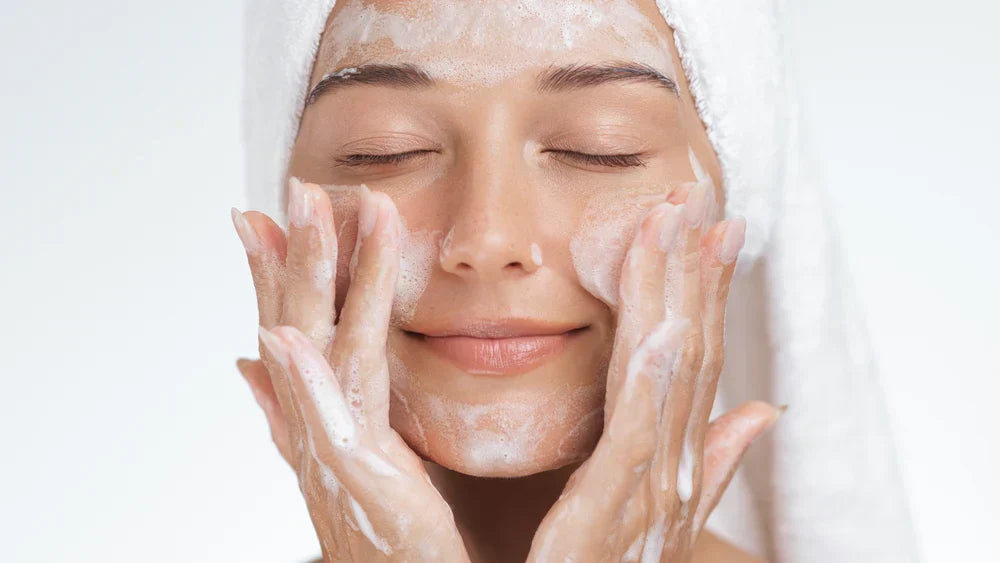
Are Foam Cleansers Good for Your Skin?
Key Takeaways
-
Targeted Deep Cleanse: Foam cleansers use surfactants to create deep-cleaning micelles that are highly effective at lifting oil and pore congestion.
-
Ideal for Oil Management: They’re the best choice for oily and acne-prone skin because of their ability to regulate shine and prevent breakouts.
-
Balance Prevents Stripping: Balanced formulas with hydrating ingredients like glycerin ensure a thorough clean without compromising the skin's protective barrier.
Foam cleansers are one of the most popular types of face wash, prized for their light texture and satisfying clean. But are foaming facial cleansers really as effective as they claim?
At Shape Clinic, we’re here to settle the debate. This guide explains what these cleansers are and how to use them for that perfectly clean, refreshed complexion.
What is a Foam Cleanser?
A foam cleanser is a liquid or gel product that creates a rich lather through surfactants, special molecules that attract both oil and water. This allows them to surround and trap impurities within micelles, which are then easily rinsed away.
The foam acts as an efficient delivery system, enhancing deep cleansing and pore penetration. Modern formulas balance this powerful action with hydrating ingredients like glycerin to effectively remove excess oil and debris.
4 Benefits of Foam Cleansers
Foam cleansers offer a deep clean that revitalises the skin. Here are their top benefits:
-
Deep Purifying Cleanse: The rich lather works deeply to lift dirt, excess oil, and makeup residue for an immaculate canvas.
-
Ideal for Oil Control: Highly effective at managing sebum, making them excellent for oily and acne-prone skin.
-
Refreshing Experience: The light, airy texture provides an invigorating and instantly refreshed feeling upon rinsing.
-
Balanced Formulation: Modern formulas cleanse effectively without stripping the skin's moisture, minimising the risk of over-drying.
How Foam Cleansers Support Different Skin Types
Foam cleansers offer unique support for managing excess oil and congestion across several key skin types.
Oily and Acne-Prone Skin
The primary benefit is the powerful removal of excess sebum. Effective surfactants lift the oils and debris that clog pores, which helps regulate oil production and reduces the conditions that lead to breakouts for clearer, smoother skin.
Combination Skin
For this skin type, foaming cleansers provide a necessary balancing act. Their deep-cleaning action manages the oily T-zone, preventing shine and congestion, while the light texture avoids depositing heavy residue on drier cheek areas.
Non-Irritated Sensitive Skin
Modern, pH-balanced formulas use milder surfactants to provide a thorough clean without the need for scrubbing. This delicate action reduces friction and potential for irritation, allowing for a deep cleanse that protects the skin’s gentle barrier function.
Choosing the Right Foam Cleanser
To ensure you reap the benefits of a foaming cleanser without the risk of over-drying, it’s vital to choose one that aligns perfectly with your skin's needs.
-
Prioritise Mild Surfactants: For sensitive or combination skin, seek out formulas with gentle cleansing agents that effectively remove oil without excessive stripping.
-
Look for Hydrating Ingredients: Always check the ingredient list for moisture-replenishing components like glycerin or hyaluronic acid to balance the deep-cleansing action.
-
Match Your Skin Concern: For oily or acne-prone skin, choose formulas that include clarifying ingredients like salicylic acid to maximise pore clearing and sebum control. For sensitive skin, look for mild, pH-balanced formulas focused on gentle, daily refreshment to protect the skin barrier.
How to Use Foam Cleansers Properly
Maximise your foam cleanser's deep clean while protecting your skin's moisture. Follow these essential steps:
-
Dampen & Dose: Apply a small pump of cleanser to a face dampened with lukewarm water.
-
Lather & Massage: Work into a rich foam. Gently massage the lather in circular motions for at least 30 seconds to lift pore impurities.
-
Rinse Thoroughly: Rinse your face completely with lukewarm water to remove all cleanser and residual surfactants.
-
Pat & Hydrate: Pat skin dry gently. Immediately follow with your serum and moisturiser to support the skin barrier.
Tip for Best Results: Avoid over-cleansing (limit to twice daily) and choose formulas with mild surfactants and hydrating additives like glycerin to prevent dryness.
The Final Verdict on Foam Cleansers
Foam cleansers are undeniably effective, providing a powerful, satisfying clean that is ideal for managing oil and congestion. By choosing a formula with mild surfactants and hydrating ingredients, you can easily enjoy the refreshing benefits without sacrificing your skin's moisture barrier.
Ready to elevate your skincare routine? Shop the expert-approved Shape Clinic skincare collection, including the SkinCeuticals® Soothing Cleanser Foam.
Additional Reading
---
About the Author
Nicky Lurie is a skin therapist with over 20 years of experience, specialising in medical aesthetics. She supports both our surgical and aesthetic services by delivering customised skincare solutions using medical-grade treatments. Nicky’s expertise ensures clients receive effective, evidence-backed products tailored to their specific needs, from acne to ageing.
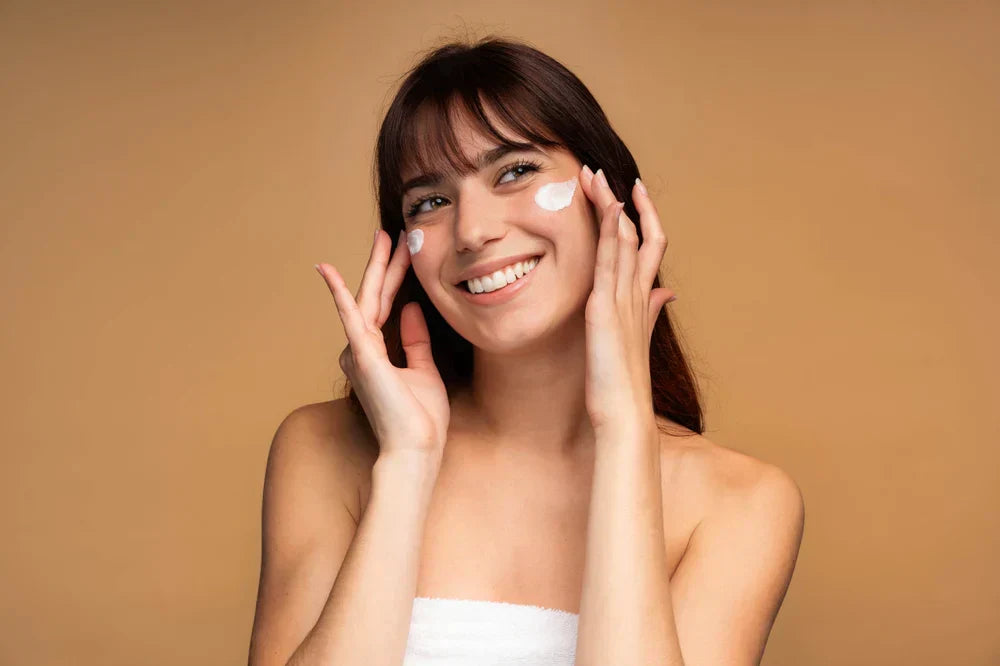
Are Cream Cleansers Good? Find the Solution for Your Skin Type
Key Takeaways
-
Understanding Cream Cleansers: These rich, hydrating washes cleanse by nourishing your skin's moisture barrier, not stripping it away.
-
Tips for Best Results: Gently massage the cleanser for a full minute, rinse with lukewarm water, and lock in moisture with a post-cleansing routine.
-
What to Look For: Prioritise non-foaming formulas with hydrating ingredients like ceramides and emollients, tailored to the unique needs of your skin.
A cream cleanser is a gentle way to remove impurities while soothing and hydrating your complexion. But with so many options available, you might be wondering, “Are cream cleansers actually good for my skin?” This article will help you find the answer by exploring the benefits of cream cleansers and which skin types they’re suited to.
What is a Cream Cleanser?
A cream cleanser is a water-based emulsion of oils and water with a thick, velvety texture. This composition allows it to gently purify the skin without stripping its natural moisture. Unlike many gels or foams, cream cleansers are infused with hydrating ingredients like plant-based oils, humectants, and emollients. By definition, they’re a gentle, moisturising cleansing option that leaves the skin feeling soft and hydrated, not tight or dry.
How Do Cream Cleansers Work?
Cream cleansers use a dual-action process that both purifies and hydrates your skin.
-
Surfactant Action: The surfactants in the cleanser bind to impurities, such as dirt, makeup, and oil, on your skin's surface.
-
Micelle Formation: These impurities are encapsulated in tiny spheres called micelles, which are easily rinsed away with water.
-
Barrier Protection: Unlike harsher cleansers, their creamy base is infused with moisturising ingredients that protect your skin's natural barrier and lock in hydration.
4 Benefits of Cream Cleansers
If you’re looking for a cleanser that soothes while it purifies, understanding the benefits of cream cleansers is your essential first step.
1. Hydrating and nourishing
Cream cleansers contain moisturising agents like humectants and ceramides that actively attract and retain water in the skin. This not only nourishes the surface but also supports your skin's natural barrier to prevent water loss and combat dryness.
2. Gentle and non-stripping
Unlike harsh, foaming cleansers, cream cleansers use mild surfactants that effectively lift away impurities while preserving your skin's natural oils. This gentle action prevents the irritation and tightness often associated with over-cleansing.
3. Ideal for dry, sensitive, or mature skin
These cleansers deliver essential lipids and hydration that are often diminished in dry, sensitive, or aging skin. Their rich, replenishing formulation helps restore the skin’s barrier, calms inflammation, and strengthens its resilience.
4. Helps maintain the skin’s natural moisture balance
Cream cleansers support the skin's lipid and acid mantle layers, which are critical for maintaining balance. By helping the skin retain water and stabilising its pH, they reduce transepidermal water loss, ensuring skin stays balanced and healthy.
How to Use a Cream Cleanser
Using a cream cleanser face wash properly ensures you get the most out of its gentle and hydrating properties. Here is a simple, step-by-step guide for best results:
-
Prep Your Hands: Begin with clean hands to avoid transferring any bacteria or dirt to your face.
-
Moisten Skin: Lightly dampen your face with lukewarm water to prepare your skin for cleansing.
-
Apply Cleanser: Dispense a small, pea-sized amount of cleanser onto your fingertips.
-
Massage Gently: Using gentle circular motions, massage the cleanser over your forehead, cheeks, nose, and chin for 30 to 60 seconds.
-
Rinse Thoroughly: Rinse your face completely with lukewarm water until all cleanser residue is gone.
-
Pat Dry: Use a clean, soft towel to gently pat your face dry, avoiding any harsh rubbing.
-
Complete Your Routine: Follow with your toner, serum, and moisturiser to lock in hydration and balance your skin.
-
AM & PM Use: For best results, use a cream cleanser both morning and night, and especially after removing heavy makeup.
Cream Cleansers vs Foam Cleansers
Choosing the right cleanser for your skin often comes down to a simple question: Should I use a cream or a foam? Here’s a simple at-a-glance table to help you choose.
|
Feature |
Cream Cleanser |
Foam Cleanser |
|
Texture |
Rich and creamy |
Light and foaming |
|
Cleansing Action |
Gently dissolves impurities without stripping |
Provides a deep cleanse to remove excess oil |
|
Skin Feel After Use |
Soft, hydrated, never tight |
Refreshed, but can feel tight |
|
Ideal For |
Dry, sensitive, and mature skin |
Oily, acne-prone, and combination skin |
|
Primary Benefit |
Hydrates and maintains the skin barrier |
Deeply cleans pores and controls shine |
|
Potential Drawback |
May not provide a deep enough cleanse for very oily skin |
Can be too harsh or stripping for some skin types |
Finding the Best Cream Cleanser for Your Skin
Finding the right cream cleanser for you depends on your specific skin needs. Here’s what to look for, along with our top recommendation:
-
A Gentle Formula: Look for a non-foaming cleanser that effectively removes impurities and long-wear makeup without stripping your skin's natural moisture.
-
Hydrating Ingredients: Prioritise ingredients like emollients, glycerin, and nourishing oils that help soften and restore your skin's surface.
-
Shape Clinic Recommends: SkinCeuticals® Gentle Cleanser is mild cream cleanser that's designed to remove impurities while leaving your skin feeling soft, moisturised, and primed for the rest of your routine.
Your Journey to Hydrated Skin Starts Here
A cream cleanser is an essential ritual that redefines what cleansing truly means. Offering a perfect blend of gentle efficacy and nourishing hydration, it works in harmony with your skin’s biology to purify without stripping. Whether your skin is dry, sensitive, or mature, a gentle cream cleanser can leave your complexion feeling soft, soothed, and ready for the products that follow. Find your perfect cleanser at Shape Clinic and shop online today.
Additional Reading
---
About the Author
Nicky Lurie is a skin therapist with over 20 years of experience, specialising in medical aesthetics. She supports both our surgical and aesthetic services by delivering customised skincare solutions using medical-grade treatments. Nicky’s expertise ensures clients receive effective, evidence-backed products tailored to their specific needs, from acne to ageing.
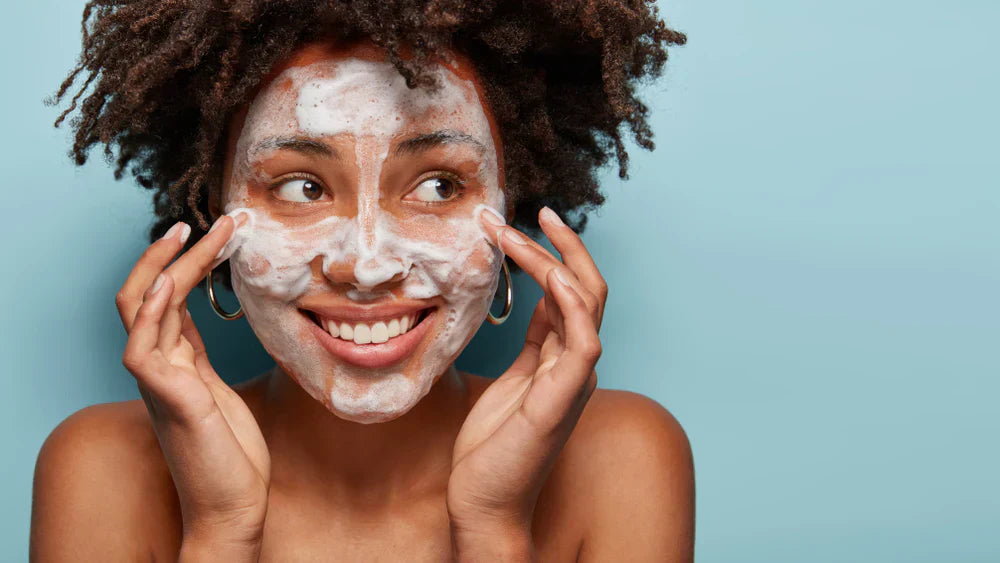
What is a Cleanser? Your Complete Skincare Guide
Key Takeaways
-
Why Cleansers Matter: Proper cleansing is the most important step in any routine, as it prepares your skin to fully absorb and benefit from every subsequent product.
-
5 Types of Cleanser: Learn how oil, foam, cream, micellar water, and gel cleansers each offer unique benefits and are formulated for specific skin types.
-
Products We Recommend: Explore the Shape Clinic cleanser collection to find leading products from trusted brands like SkinCeuticals and Universkin.
It's easy to get confused about the foundations of skincare. But understanding what a cleanser is and what it does is the first step towards a healthy complexion. This guide will help you sort through the myths and find your perfect match. We're here to make finding the right product simple, so you can build a strong foundation for beautiful skin.
What is a Cleanser?
A cleanser is a skincare product that purifies the skin of daily pollutants, makeup, and excess oil. It’s the first step in your routine, preparing the skin for subsequent products. Common ingredients include gentle cleansing agents, like surfactants, and humectants, such as glycerin, to hydrate and soften the skin.
What Do Cleansers Do?
Cleansers work through surfactant science. Surfactants are molecules with both oil- and water-attracting properties. When applied, they form tiny spheres called micelles that trap impurities like dirt, pollutants, and excess oil.
As you rinse with water, the micelles are easily washed away, clearing your pores and preventing buildup. Modern formulas are designed to be gentle, ensuring they cleanse effectively without stripping or disrupting your skin's vital protective barrier.
5 Types of Cleansers to Consider
Cleansers come in many forms, each formulated with a unique texture and purpose to suit different skin types and concerns. Choosing the right one is key to an effective skincare routine.
|
Cleanser Type |
Key Use |
Ideal For |
|
Oil/Balm |
Dissolves makeup and stubborn impurities |
Dry to mature skin |
|
Foam |
A deep, satisfying cleanse |
Oily to acne-prone skin |
|
Cream/Lotion |
A gentle cleanse with added hydration |
Dry to sensitive skin |
|
Micellar Water |
A convenient, no-rinse option |
All skin types |
|
Gel |
A light, refreshing cleanse |
Normal to combination skin |
How Do You Use a Cleanser?
Using a cleanser properly is key to a healthy complexion. For best results, our skin care team suggests these simple steps:
-
Prepare Your Face: Begin by pulling back your hair and washing your hands to ensure they are clean before touching your face.
-
Dampen Skin & Apply: Wet your face with lukewarm water, then dispense a small amount of cleanser onto your fingertips.
-
Massage Gently: Massage the cleanser into your skin using gentle, circular motions for about 30–60 seconds. Take care to avoid the delicate eye area.
-
Rinse & Pat Dry: Rinse thoroughly with lukewarm water until no residue remains. Finally, gently pat your face dry with a clean, soft towel.
Is Cleanser and Face Wash the Same?
No, a cleanser and a face wash are not the same thing. A cleanser is a gentler, hydrating product that’s ideal for dry or sensitive skin. A face wash is a foaming, water-based product that provides a deeper, more intense clean, making it better for oily or acne-prone skin.
Cleansers vs Toners: What’s the Difference?
It's easy to get your cleansers and toners confused. But think of them as a dynamic duo! Each has a distinct job that complements the other perfectly.
-
Purpose: Cleansers purify the skin by removing dirt and makeup. Toners rebalance and hydrate it.
-
Application: You rinse cleansers off your skin. Toners are left on to absorb.
-
Form: Cleansers come in various textures, such as gels, creams, and foams, while toners are always a liquid.
Are all Cleansers Good for Your Skin?
No, not all cleansers are equally good for your skin. Choosing the right one depends on your skin type and its formulation.
What to Look For
-
Gentle Ingredients: Look for mild surfactants and formulas.
-
Hydrating Components: Find ingredients like hyaluronic acid or glycerin to support your skin’s moisture and barrier.
-
Targeted Formulas: Choose a cleanser designed specifically for your skin type.
-
Non-Comedogenic: Ensure it’s non-pore-clogging if you are prone to breakouts.
What to Avoid
-
Harsh Surfactants: Avoid formulas that leave your skin feeling tight or stripped.
-
Heavy Fragrances and Dyes: These are common irritants that can cause a reaction.
-
Drying Alcohols: These can damage and disrupt your skin's protective barrier over time.
4 Common Cleansing Mistakes to Avoid
Even the most basic step in a skincare routine has its pitfalls. Here are some common cleansing mistakes to avoid to ensure you’re getting the most out of your routine.
-
Using water that is too hot or too cold, as extreme temperatures can irritate and dehydrate your skin.
-
Over-cleansing skin can strip away natural oils and the protective barrier.
-
Not rinsing thoroughly can leave behind residue that clogs pores.
-
Using a cleanser that is too harsh for your skin type can leave it feeling tight and dry.
How to Choose the Best Cleanser for Your Skin
To help you find your perfect match, here are some of our recommended cleansers tailored to specific skin concerns.
For Acne-Prone Skin
SkinCeuticals® Simply Clean Gel Cleanser is a purifying formula that gently exfoliates, refines pores, and efficiently removes excess oil and impurities, leaving your skin feeling clean and clear.
For Mature or Dry Skin
SkinCeuticals® Gentle Cleanser is a creamy, mild formula that cleanses without stripping moisture. It is designed to remove impurities and makeup while softening the skin and supporting its natural barrier.
For Sensitive Skin
Universkin™ L'Huile Universal Cleansing Olive Oil is a multi-purpose oil that purifies the skin while providing soothing and hydrating benefits, making it an ideal non-irritating option for even the most sensitive skin types.
Final Thoughts: Investing in Skincare Foundations
Think of your cleanser as the true foundation for a glowing complexion. It’s the essential first step that washes away the day and supports your skin’s protective barrier, preparing it to absorb all the products that follow. Explore the curated cleanser collection at Shape Clinic and continue your journey towards a healthy glow.
Additional Reading
-
What is a Gentle Cleanser? The Essential Secret to Calmer, Clearer Skin
-
Are Cream Cleansers Good? Find the Solution for Your Skin Type
---
About the Author
Nicky Lurie is a skin therapist with over 20 years of experience, specialising in medical aesthetics. She supports both our surgical and aesthetic services by delivering customised skincare solutions using medical-grade treatments. Nicky’s expertise ensures clients receive effective, evidence-backed products tailored to their specific needs, from acne to ageing.
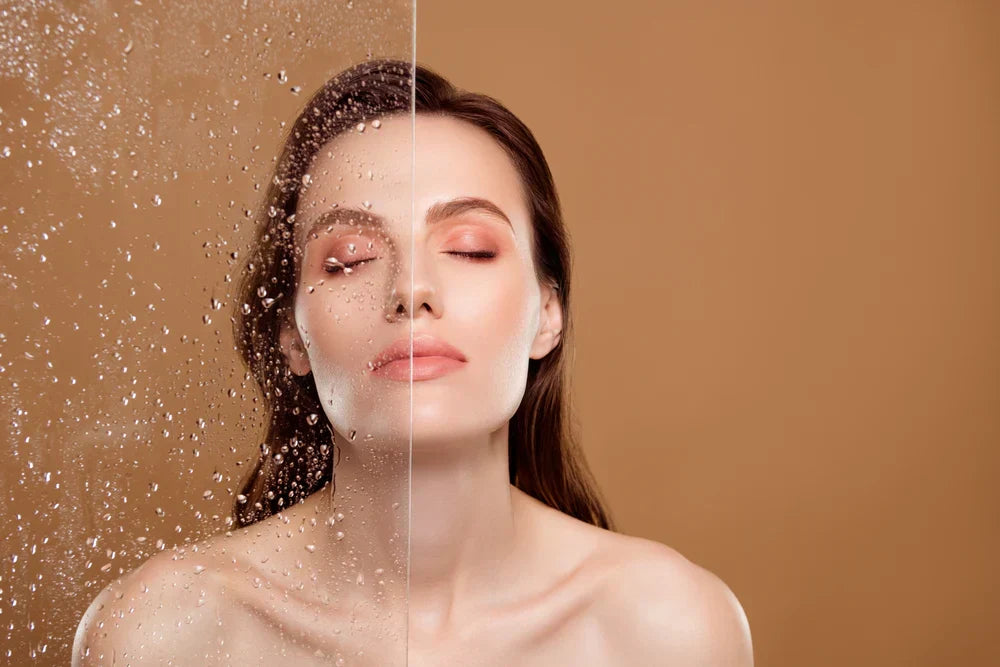
Glass Skin: What It Is, Benefits & How to Achieve This Radiant Look
The "glass skin" trend, originating from Korean skincare, has gained global popularity for its emphasis on achieving radiant, smooth, and hydrated skin. The term refers to a complexion so clear, luminous, and flawless that it resembles glass. Please consult with a qualified skincare professional to ensure the treatments and products used are suitable for your skin type and concerns.
While achieving this look requires consistent care, hydration, and professional treatments, results can vary based on individual skin types and concerns. At Shape Clinic, we offer personalized skincare advice and advanced treatments to support your skincare goals. For tailored guidance, consult with our experts.
What Is Glass Skin?
Glass skin refers to a complexion that embodies ultimate clarity, smoothness, and hydration. Its defining characteristics include:
- Clarity: Free from blemishes, dark spots, and redness.
- Smoothness: Minimised appearance of pores or texture.
- Luminosity: A healthy, hydrated glow that reflects light effortlessly.
Achieving this look isn’t just about topical skincare—it requires a holistic approach that combines a tailored routine, professional-grade treatments, and lifestyle adjustments. At Shape Clinic, we specialise in personalised skincare strategies to guide clients toward this transformative glow. Consult with a professional for advice on the best treatments and products for your skin.
Step-by-Step Guide to Achieving Glass Skin
Achieving glass skin involves a thoughtful, multi-step routine utilising science-backed skincare. We focus on a full regimen including cleansing, treatment serums, hydration, and SPF, along with targeted in-clinic treatments. Please consult with a professional for personalized recommendations on what works best for your skin.
Step 1: Double Cleansing
Double cleansing is a cornerstone of the glass skin routine. Start with an oil-based cleanser, such as Universkin O Cleanser, to remove makeup, sunscreen, and impurities. Follow with a foaming cleanser, like SkinCeuticals Simply Clean, to deeply cleanse while respecting the skin’s natural barrier. Consult a skincare expert to ensure products are suitable for your skin.
Step 2: Gentle Exfoliation
Exfoliation removes dead skin cells and reveals a smoother texture. Opt for chemical or enzymatic exfoliants, such as SkinBetter Science Peel Pads, used 1–2 times per week. Consult with a professional to avoid irritation and select the right exfoliant for your skin.
Step 3: Layering Serums
Serums are essential for targeting specific concerns:
Additional Reading
---
About the Author
Nicky Lurie is a skin therapist with over 20 years of experience, specialising in medical aesthetics. She supports both our surgical and aesthetic services by delivering customised skincare solutions using medical-grade treatments. Nicky’s expertise ensures clients receive effective, evidence-backed products tailored to their specific needs, from acne to ageing.
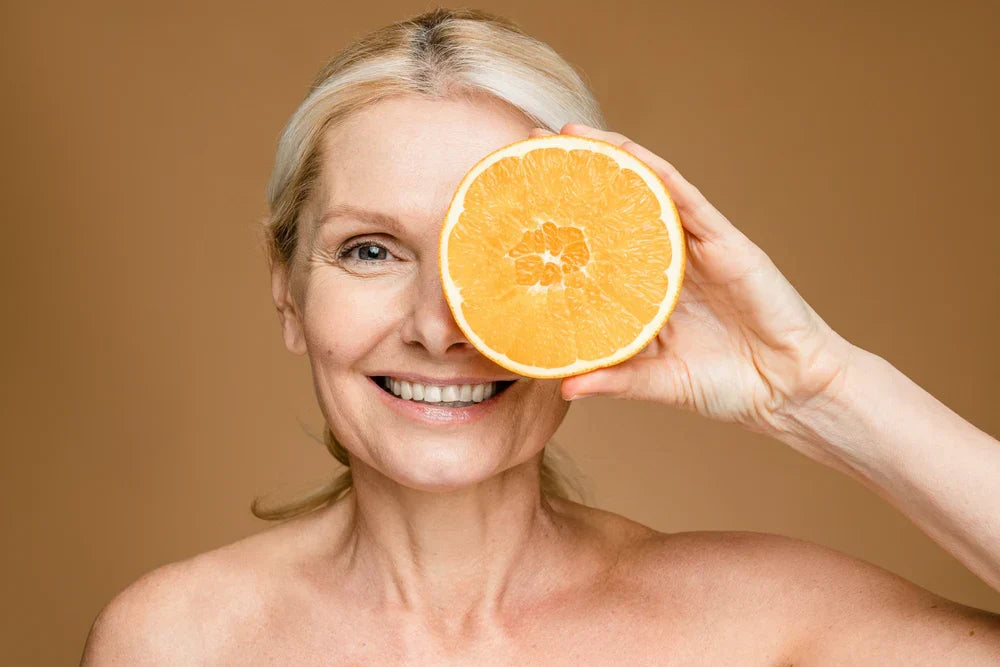
Complete Guide to Vitamin C for Skin: Brightening, Benefits & Best Products
Vitamin C has become a cornerstone ingredient in skincare for its ability to address a variety of skin concerns, from dullness and pigmentation to signs of ageing.
As a potent antioxidant, Vitamin C works to protect and repair skin from environmental damage, promoting a brighter, healthier complexion.
For personalised skincare guidance, consult with a qualified healthcare professional.
What is Vitamin C and How Does It Benefit Your Skin?
Vitamin C, also known as L-ascorbic acid, is a water-soluble vitamin essential for skin health. In skincare, it’s celebrated for its powerful antioxidant properties that neutralise free radicals and combat the effects of environmental damage, such as UV rays and pollution.
Vitamin C-based treatments should be recommended by a qualified professional for optimal skin health.
What Does Vitamin C Do?
Collagen Boosting
Vitamin C plays a critical role in collagen synthesis, a protein that keeps skin firm and youthful. Increased
collagen levels help reduce fine lines and improve elasticity, making Vitamin C a key anti-ageing ingredient.
For personal recommendations on collagen-boosting treatments, please consult a professional practitioner.
Free Radical Protection
Environmental aggressors like pollution and UV rays create free radicals that damage skin cells, leading to premature ageing. Vitamin C protects the skin by neutralising these harmful molecules.
Consult with your skincare specialist to understand how Vitamin C can protect your skin from environmental damage.
Brightens and Evens Skin Tone
Vitamin C is effective at reducing dark spots and pigmentation issues, such as melasma or post-inflammatory hyperpigmentation. It works by inhibiting the enzyme tyrosinase, which reduces melanin production, leading to a more even and radiant complexion.
A qualified professional can guide you in using Vitamin C products for hyperpigmentation concerns.
Different Forms of Vitamin C: Topical vs. Oral
Topical Vitamin C
Topical application is the most effective way to deliver Vitamin C directly to the skin, where it can target concerns like fine lines, pigmentation, and dullness.
The best formulations adhere to the Duke Parameters, which specify that Vitamin C should be:
- Pure L-ascorbic acid
- At a concentration of 10%-20%
- At a pH level below 3.5 (SkinCeuticals Research)
Products like SkinCeuticals C E Ferulic, Phloretin CF, and Silymarin CF are excellent examples of optimised topical Vitamin C serums available at Shape Clinic.
Consult a skincare specialist for guidance on selecting the best Vitamin C serum for your skin type.
Oral Vitamin C
While Vitamin C tablets and supplements provide systemic benefits for overall health, only a small fraction of the ingested Vitamin C reaches the skin. For targeted concerns, topical formulations are far more effective.
Speak with your healthcare provider to learn more about the best ways to incorporate Vitamin C into your regimen.
The Best Vitamin C Serums and Products for Skin
What to Look for in a Vitamin C Serum
When choosing a Vitamin C serum, consider:
- Concentration: Opt for serums with 10%-20% L-ascorbic acid for maximum effectiveness.
- Stability: Look for products in opaque, airtight packaging to prevent oxidation.
- Complementary Ingredients: Ingredients like ferulic acid and vitamin E can stabilise Vitamin C and enhance its antioxidant effects.
Top Recommendations from Shape Clinic
-
SkinCeuticals C E Ferulic:
A powerful antioxidant serum that combines Vitamin C with ferulic acid and Vitamin E to neutralise free radicals and brighten the complexion. -
SkinCeuticals Phloretin CF:
Perfect for sensitive skin, this serum combines 10% Vitamin C with phloretin for advanced antioxidant protection. -
SkinCeuticals Silymarin CF:
Designed for oily or acne-prone skin, this serum combines Vitamin C with silymarin for oil control and brightening effects.
How to Incorporate Vitamin C Into Your Skincare Routine
- Use Vitamin C serums in the morning after cleansing to shield your skin from daily environmental aggressors.
- Apply 4–5 drops of serum daily. Consistency is key for optimal results.
- Follow your Vitamin C serum with a hydrating product like hyaluronic acid to lock in moisture.
- Always finish with a broad-spectrum sunscreen to protect your skin and enhance Vitamin C’s benefits.
Potential Side Effects & Considerations
Some individuals may experience mild irritation, redness, or sensitivity when starting Vitamin C. To minimise reactions:
- Start with a lower concentration (e.g., 10%) and gradually increase as your skin builds tolerance.
- Always patch-test new products before full application.
- Avoid using Vitamin C on broken or highly sensitive skin.
Storage Tips
Vitamin C serums are prone to oxidation when exposed to air or light. Store them in a cool, dark place and use within the recommended timeframe to maintain effectiveness.
For personalized storage guidance, please refer to product instructions.
Is Vitamin C Good for Specific Skin Concerns?
Vitamin C is a versatile ingredient that addresses a range of skin concerns by targeting their root causes while visibly improving skin over time.
Ageing Skin
Vitamin C boosts collagen production, reducing fine lines and wrinkles while restoring firmness. Its antioxidant properties neutralise free radicals, protecting against environmental ageing.
Additional Reading
---
About the Author
Nicky Lurie is a skin therapist with over 20 years of experience, specialising in medical aesthetics. She supports both our surgical and aesthetic services by delivering customised skincare solutions using medical-grade treatments. Nicky’s expertise ensures clients receive effective, evidence-backed products tailored to their specific needs, from acne to ageing.
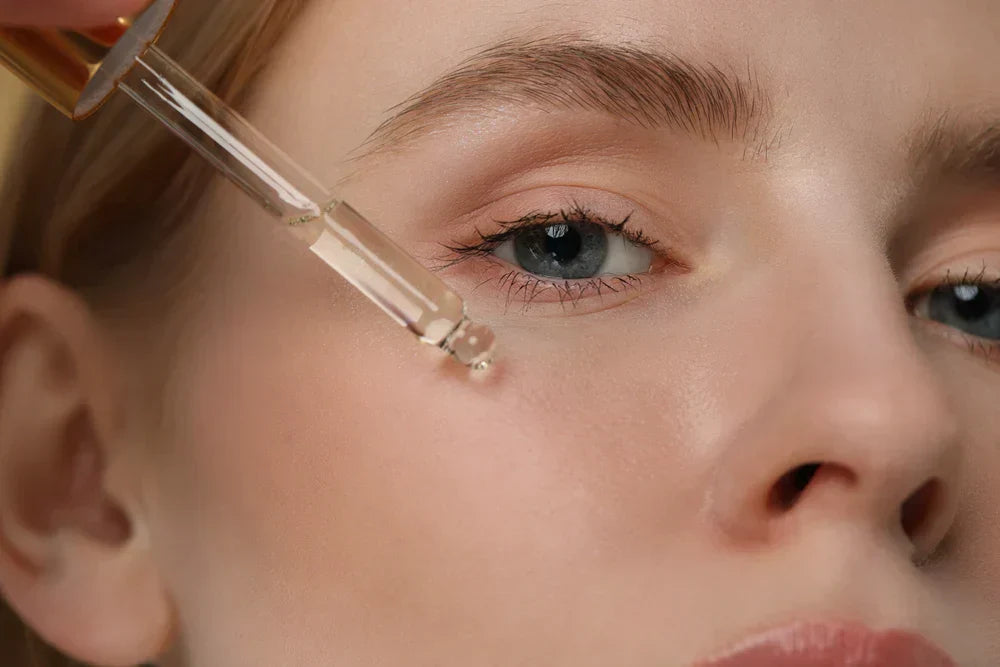
Niacinamide: The Versatile Skincare Ingredient
Niacinamide is a powerhouse skincare ingredient scientifically proven to address a wide range of skin concerns, from acne and hyperpigmentation to ageing and sensitivity. Also known as nicotinamide, niacinamide is a form of vitamin B3 that enhances cellular health and supports numerous skin functions. Due to its effectiveness and gentle nature, niacinamide has become a staple in skincare routines, especially for those looking to treat multiple skin issues simultaneously. For personalized recommendations, consult with a skincare professional.
What is Niacinamide?
Niacinamide, or nicotinamide, is a water-soluble form of vitamin B3 that plays a crucial role in skin health. This gentle yet potent ingredient works well for most skin types, helping to support cell regeneration and the synthesis of essential molecules like NAD+ and NADPH, which drive key cellular processes, including DNA repair and the regeneration of skin cells. Always consult a healthcare provider before introducing new active ingredients into your skincare routine to ensure suitability for your skin type.
Niacinamide Benefits for Skin: What Does Niacinamide Do?
Niacinamide’s multi-functional nature provides numerous skin benefits:
- Anti-inflammatory Effects: Niacinamide reduces redness and inflammation by inhibiting cytokines, making it an excellent option for people with acne, rosacea, or eczema. It’s particularly useful for calming sensitive skin and controlling flare-ups. Consult with a healthcare provider to assess if niacinamide is suitable for your condition.[1][2].
- Strengthened Skin Barrier: Niacinamide supports the skin’s protective barrier by boosting the production of ceramides, free fatty acids, and keratin. These elements help lock in moisture and shield the skin from environmental damage, reducing trans-epidermal water loss (TEWL) and increasing resilience against irritants. Consult with a skincare professional for personalized advice on how to incorporate niacinamide into your routine.[3].
- Sebum Regulation: Niacinamide can reduce excessive oil production, minimising the likelihood of clogged pores and breakouts, making it especially beneficial for oily and acne-prone skin types. For best results, consult with a skincare professional for personalized recommendations.[4].
- Minimising Pores: Niacinamide helps to refine the appearance of pores by regulating oil production and tightening the skin, resulting in a smoother texture. Consult a skincare professional to ensure it is suitable for your skin type and condition.[5].
- Hyperpigmentation Treatment: Niacinamide inhibits the transfer of melanin to the skin’s surface, helping to fade dark spots, melasma, and post-inflammatory hyperpigmentation. Research suggests that visible improvements can be seen within 8-12 weeks of consistent use. Consult with a professional to tailor your skincare routine for optimal results.[6][7].
Additional Reading
-
Complete Guide to Vitamin C for Skin: Brightening, Benefits & Best Products
-
Ceramides: Strengthening the Skin Barrier & Boosting Hydration for Healthy Skin
---
About the Author
Nicky Lurie is a skin therapist with over 20 years of experience, specialising in medical aesthetics. She supports both our surgical and aesthetic services by delivering customised skincare solutions using medical-grade treatments. Nicky’s expertise ensures clients receive effective, evidence-backed products tailored to their specific needs, from acne to ageing.
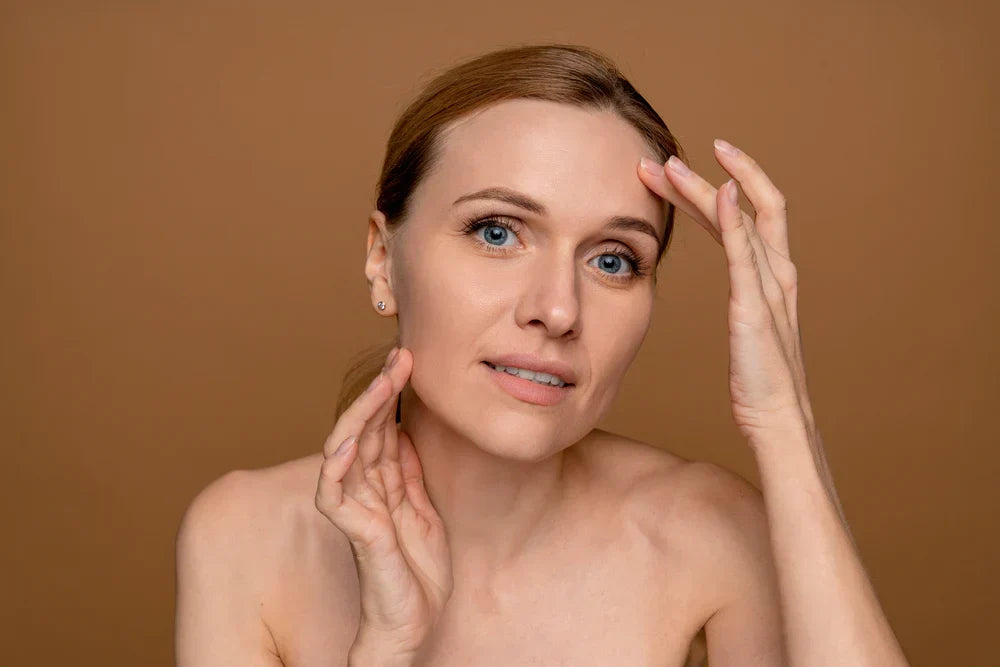
How Skin Changes with Age and What You Can Do About It
Skin ageing is influenced by both intrinsic (genetic) factors and extrinsic (environmental and lifestyle) elements. Over time, changes in skin structure and function become more evident: collagen production wanes, cell turnover slows, and cumulative environmental damage contributes to wrinkles, dryness, and uneven tone. Although this progression can’t be halted entirely, specific strategies, under the guidance of a healthcare professional, can help preserve a youthful appearance. Below, we outline the signs of ageing, decade-by-decade changes, and key approaches to skin care and ageing.
Understanding Skin Ageing
Key Components of Skin
The skin’s youthful properties depend on collagen, elastin, and hyaluronic acid—three vital components that work together to keep it firm, elastic, and hydrated. Consult with a healthcare provider for personalized advice on maintaining skin health.
- Collagen: Helps maintain structural support, preventing sagging and laxity. Consult a professional to assess your skin's collagen needs.
- Elastin: Contributes to skin’s ability to bounce back after stretching or movement. A qualified practitioner can guide you on improving skin elasticity.
- Hyaluronic Acid (glycosaminoglycans): Retains moisture, ensuring plumpness and suppleness. Consult a professional for the best hydration treatments for your skin.
As the years pass, their production declines, resulting in wrinkles, reduced elasticity, and a duller complexion. For professional advice on how to maintain youthful skin, consult with an expert.
Decade-by-Decade Changes
In Your 20s
- High Collagen Levels: During your twenties, collagen production is still robust, keeping the skin looking plump and firm. A healthcare provider can advise you on maintaining collagen health.
- Early Sun Damage: Even minor sun exposure can initiate the breakdown of collagen, so consistent SPF use is crucial. Professional skincare guidance can help protect your skin effectively.
- Lifestyle Effects: Occasional dehydration, late nights, or diets lacking antioxidants might lead to faint lines or dullness, foreshadowing changes that will become more pronounced later on. Consult your skincare provider for advice on optimizing your lifestyle for skin health.
- Proactive Care: Establishing a solid skincare routine—focusing on gentle cleansing, antioxidants, moisturising, and sun protection—lays the foundation for healthier skin in later decades. Consult a professional to develop a personalized skincare plan.
In Your 30s
- Collagen Degradation Accelerates: Collagen decreases by roughly 1% each year, leading to visible fine lines around the eyes (crow’s feet) and mouth. A professional can assess your skin's needs and suggest treatments.
- Early Wrinkles and Uneven Tone: Skin may start to show slight discolouration or mild hyperpigmentation caused by cumulative UV exposure or hormonal fluctuations (particularly around pregnancy). Consult your healthcare provider for treatment options tailored to your needs.
- Lifestyle Becomes More Critical: Stress management, dietary choices, and good hydration practices further influence skin’s appearance at this stage, helping to slow the formation of deeper wrinkles and maintaining elasticity. Professional advice can guide you through lifestyle changes that benefit your skin.
- Targeted Skincare: Introducing ingredients like retinol, antioxidants, peptides, hyaluronic acid, and lactic acid supports collagen synthesis and addresses emerging lines. Consult with your skincare specialist for a personalized treatment plan.
In Your 40s
- Pronounced Lines and Wrinkles: Fine lines from your 30s can deepen into more established wrinkles, often in areas of repeated facial movement such as the forehead and between the brows. Seek professional treatments to address these concerns.
- Barrier Function Weakens: Natural oils decrease, and the protective skin barrier may become less effective, leading to dryness, flakiness, or heightened sensitivity. Consult a professional for barrier repair treatments.
- Volume Loss: A gradual reduction in facial fat pads and subcutaneous tissue can cause hollowing around the cheeks and jawline. Professional treatments can address volume loss and restore youthful contours.
- Elevated Skincare and Treatments: Adding more potent skincare ingredients—like stronger retinoids, peptides, hyaluronic acid, and pigment inhibitors—and considering professional treatments (e.g., microneedling, laser therapy) can significantly improve texture and firmness. Consult with your practitioner to develop a treatment plan tailored to your skin's needs.
In Your 50s and Beyond
- Significant Decrease in Collagen and Elastin: The skin’s support network continues to dwindle, resulting in more visible sagging and deeper wrinkles. Consult with a skincare expert to address collagen and elastin loss effectively.
- Hormonal Shifts: Menopause leads to diminished oestrogen levels, thinning the skin and making it prone to dryness and sensitivity. Seek professional advice for tailored skin care strategies during this stage.
- Slower Cell Turnover: The skin appears lacklustre or greyish as dead cells accumulate, emphasising uneven tone and texture. Professional exfoliation and treatments can help rejuvenate the skin.
- Importance of Consistency: At this stage, regular check-ups and advanced procedures (e.g.,
Additional Reading
---
About the Author
Nicky Lurie is a skin therapist with over 20 years of experience, specialising in medical aesthetics. She supports both our surgical and aesthetic services by delivering customised skincare solutions using medical-grade treatments. Nicky’s expertise ensures clients receive effective, evidence-backed products tailored to their specific needs, from acne to ageing.
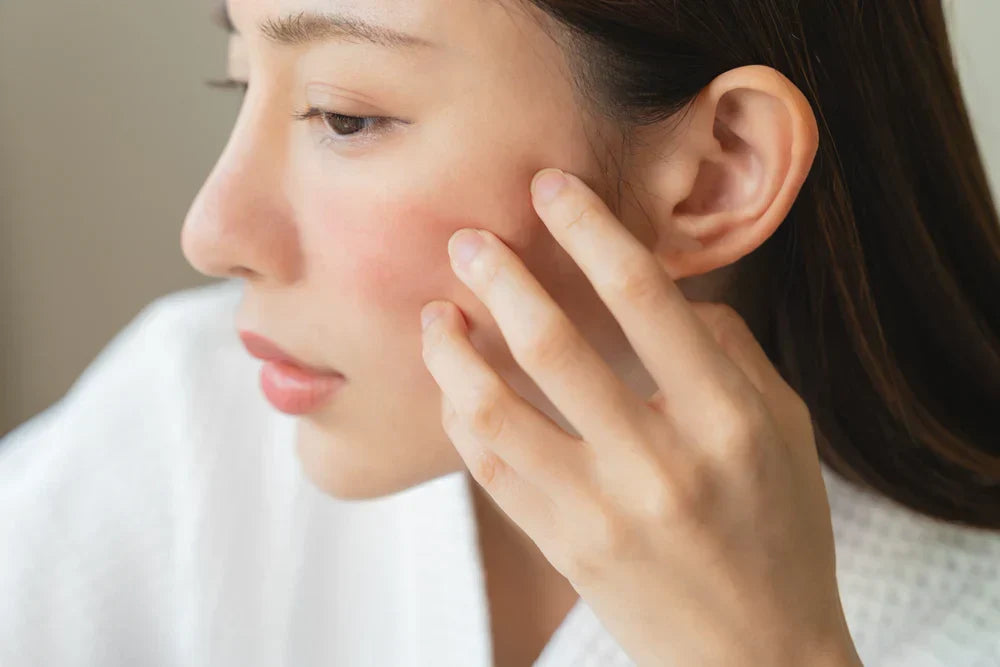
How to Get Rid of Broken Capillaries on the Face
Understanding Broken Capillaries and Treatment Options
Broken capillaries, visible as fine red or purple lines near the skin’s surface, are a common cosmetic concern that can affect the appearance of the skin. If you notice broken capillaries on your face, it’s important to consult a qualified healthcare professional for advice tailored to your individual skin type and condition.
What Causes Broken Capillaries on the Face?
Broken capillaries, also known as spider veins or telangiectasias, occur when small blood vessels near the skin’s surface become dilated or damaged. They commonly appear around the nose and cheeks and may be influenced by factors such as:
-
Natural aging processes
-
Sun exposure
-
Environmental triggers like temperature changes
-
Lifestyle factors including alcohol consumption and physical stress
A healthcare provider can help identify the possible causes related to your skin and recommend appropriate management options.
Treatment Options for Broken Capillaries
Several cosmetic procedures may be considered to reduce the appearance of broken capillaries. It is essential to have a detailed consultation with a qualified practitioner before undergoing any treatment.
Laser Therapy
Laser treatments target visible blood vessels by delivering controlled light energy to the affected area. This can help reduce the visibility of broken capillaries over a series of sessions. Recovery time and results vary depending on the individual and treatment type.
Intense Pulsed Light (IPL) Therapy
IPL therapy uses broad-spectrum light to target skin redness and vascular irregularities. Certain IPL settings may be used to address broken capillaries, with outcomes differing between individuals. A practitioner will assess suitability and recommend appropriate protocols.
Skincare Approaches
Supportive skincare routines may help maintain skin health but are not a replacement for professional treatments. Ingredients such as vitamin C, vitamin K, and peptides are commonly included in products aimed at strengthening skin and supporting its barrier function. Always seek advice from a skincare professional to select suitable products for your skin type.
Prevention and Maintenance
Preventative measures can assist in reducing the likelihood of developing further broken capillaries, including:
-
Sun protection: Daily use of broad-spectrum sunscreen and protective clothing can help protect skin from UV damage.
-
Gentle skincare: Using non-irritating products that support skin health may reduce the risk of capillary damage.
-
Avoiding triggers: Minimising exposure to extreme temperatures and lifestyle factors that may exacerbate broken capillaries.
Discuss your skincare and prevention plan with a qualified practitioner to ensure it aligns with your individual needs.
Consult a Qualified Professional
At Shape Clinic, we prioritise personalised care and evidence-based approaches. If you are concerned about broken capillaries, we recommend booking a consultation with our experienced skincare professionals. They can provide an assessment and discuss treatment options, including vascular laser therapy and IPL, tailored to your skin and aesthetic goals.
Disclaimer: This information is intended as a general guide and does not replace medical advice. Results vary by individual. Treatments described are cosmetic and are not guaranteed to cure or prevent skin conditions. Always consult a registered health practitioner before starting any treatment.
Additional Reading
---
About the Author
Nicky Lurie is a skin therapist with over 20 years of experience, specialising in medical aesthetics. She supports both our surgical and aesthetic services by delivering customised skincare solutions using medical-grade treatments. Nicky’s expertise ensures clients receive effective, evidence-backed products tailored to their specific needs, from acne to ageing.

Collagen: 'The Foundation of Youthful Skin' Explained
Collagen is often referred to as the “foundation of youthful skin”, due to its role in keeping skin firm, smooth, and resilient. As the primary protein in our skin, collagen maintains elasticity and structure, making it an essential component of any anti-aging skincare routine. At Shape Clinic, we offer targeted treatments and advanced products that help maintain and restore collagen, using scientifically proven approaches to enhance skin’s vitality and health. Consult a qualified practitioner before starting any treatments to assess suitability for your skin needs.
What is Collagen and Why is it Important for Skin?
Collagen is a structural protein that comprises about 75% of the skin's dry weight. This protein is the core building block that gives skin its strength and elasticity, keeping it firm and youthful-looking. Collagen provides essential support for the skin, forming a network that holds skin cells together and maintains their structure. There are three main types of collagen essential for skin health:
- Type I: The most predominant collagen type, responsible for maintaining skin’s structure and strength.
- Type III: Works in tandem with Type I, supporting elasticity and firmness and promoting the production of Type I collagen for optimal resilience.
- Type IV: Found in the skin’s basement membrane, it aids in cellular regeneration and wound healing, keeping the skin refreshed and restored.
As we age, maintaining these collagen levels is essential for preserving skin’s youthful qualities. Consult with a professional to assess how to preserve and enhance collagen production.
The Science Behind Collagen Depletion and Skin Ageing
Collagen production reaches its peak in the mid-20s and begins a gradual decline of approximately 1% per year from age 30 onwards. This decrease is a significant factor in the appearance of fine lines, wrinkles, and loss of elasticity. Several factors accelerate collagen breakdown:
- Sun Exposure: UV rays penetrate the skin and degrade collagen fibres, leading to a weakened skin structure and premature wrinkles [1].
- Environmental Pollution and Smoking: Free radicals from pollution and smoke cause oxidative stress, which breaks down collagen and hastens visible aging [2].
- Hormonal Changes: Hormonal fluctuations, particularly during menopause, can cause a sharp decline in collagen levels, resulting in skin sagging, reduced firmness, and deeper wrinkles.
By understanding these factors, individuals can take proactive steps to slow collagen depletion and preserve skin’s youthful structure [3].
Natural Ways to Boost Collagen Production
Incorporating collagen-supportive foods, targeted skincare, and smart lifestyle habits can help maintain youthful skin and combat early signs of aging.
Nutritional Strategies
Nourishing the skin from within is essential for collagen synthesis. Key nutrients that promote collagen production include:
- Amino Acids (Proline and Glycine): These building blocks are essential for collagen formation and can be found in foods like bone broth, fish, and egg whites.
- Vitamin C: This potent antioxidant plays a vital role in collagen synthesis, helping to stabilise collagen molecules. Vitamin C-rich foods like citrus fruits, berries, and leafy greens can support natural collagen production.
Lifestyle Adjustments
Certain lifestyle habits also play a critical role in preserving collagen:
- Sun Protection: Daily use of SPF and reducing UV exposure are essential in preventing collagen breakdown caused by sun damage. Broad-spectrum sunscreen is one of the most effective tools for protecting skin structure.
- Avoiding Smoking and Limiting Sugar Intake: Smoking and high sugar intake accelerate collagen degradation, contributing to premature wrinkles and loss of elasticity. Reducing or avoiding these habits helps preserve collagen levels and maintain skin firmness over time.
Skincare Treatments and Products
Targeted skincare ingredients can significantly enhance collagen production and improve overall skin health. Key ingredients that support collagen synthesis include:
- Retinoids: Known for their ability to increase cell turnover and stimulate collagen production, retinoids are effective in reducing fine lines and improving skin texture over time.
- Peptides: Peptides act as messengers, signalling skin cells to produce collagen and elastin, which are essential for skin firmness and elasticity.
- Antioxidants: Ingredients like vitamin C protect collagen from free-radical damage while also supporting its synthesis, helping to maintain a firm, youthful complexion.
Shape Clinic offers a range of scientifically formulated products featuring these collagen-boosting ingredients, each designed to strengthen the skin’s collagen network and enhance resilience. Consult with a skincare expert before incorporating new products into your routine to ensure they are right for your skin type.
Do Collagen Supplements Work?
Hydrolysed collagen supplements, particularly those containing Types I and III, have gained recognition for their ability to enhance skin elasticity, hydration, and reduce wrinkles [4]. Research shows that consistent collagen supplementation can support skin firmness and moisture retention, providing anti-ageing benefits from within [5].
Collagen supplements derived from bovine and marine sources are especially effective for skin health. Bovine collagen, rich in Types I and III and structurally similar to human collagen, is known to improve skin elasticity and hydration [6]. Marine collagen, celebrated for its high bioavailability, is absorbed efficiently and supports skin structure and moisture retention [6]. Choosing high-quality, hydrolysed collagen from trusted brands like Vida Glow can ensure maximum absorption and results, strengthening the skin’s collagen network for a more youthful appearance.
Advanced Collagen-Boosting Treatments from Skincare Experts
For intensive collagen restoration, Shape Clinic offers non-invasive treatments designed to improve skin firmness and texture.
Due to current Therapeutic Goods Administration (TGA) regulations, specific prescription-based treatments cannot be detailed on this website. We offer comprehensive consultations to assess your suitability and develop personalised treatment plans, where appropriate options can be discussed following clinical assessment.
Additional Reading
---
About the Author
Nicky Lurie is a skin therapist with over 20 years of experience, specialising in medical aesthetics. She supports both our surgical and aesthetic services by delivering customised skincare solutions using medical-grade treatments. Nicky’s expertise ensures clients receive effective, evidence-backed products tailored to their specific needs, from acne to ageing.

How to Brighten Dull Skin
Dull skin, marked by a lack of luminosity and an uneven texture, is often the result of environmental stressors and lifestyle habits, but it’s not entirely out of your control. With a strategic approach and the right professional guidance, unlocking the vibrancy of your skin is within reach. Consult a qualified practitioner to discuss personalized skincare strategies for your needs. Join us as we explore the foundational causes of dull skin and unveil a series of effective strategies designed to amplify your skin's natural luminosity.
What Causes Dull Skin?
Environmental Factors
Our skin is continuously exposed to environmental elements that can diminish its health and appearance. Pollution, UV radiation, and harsh weather conditions contribute to oxidative stress, a process that accelerates premature aging of skin cells and hampers their ability to maintain a vibrant, youthful glow. Consult a professional for personalized strategies to protect your skin from environmental damage.
Lifestyle Influences
Our daily habits also significantly influence our skin’s health and appearance. For example, insufficient sleep disrupts the skin's natural renewal cycle, leading to a lackluster appearance, while chronic stress triggers inflammatory responses that can further impair skin vitality. Similarly, a diet lacking in essential nutrients fails to provide the building blocks needed for robust skin health. Speak with a skincare specialist for recommendations tailored to your lifestyle.
How To Brighten Dull Skin
Establish a Skincare Routine
Gentle Cleansing
A cornerstone of any effective skincare routine is the selection of a gentle cleanser. The ideal cleanser removes impurities and excess oils without compromising the skin's natural protective barrier. This delicate balance is vital for preventing dehydration and ensuring the skin remains healthy and receptive to subsequent dull skin treatments. Consult a professional for recommendations on the best cleansers for your skin type.
Exfoliation Techniques
Exfoliation plays a pivotal role in combating skin dullness. By methodically removing dead skin cells that accumulate on the surface, exfoliation encourages the renewal of the skin layer, revealing the smoother, more radiant skin beneath. Incorporating chemical exfoliants, tailored to your skin's sensitivity and needs, can significantly improve your skin's texture and enhance its overall glow. Consult a professional for personalized exfoliation treatments.
Hydration and Nourishment
Moisturising Essentials
Hydrated skin is synonymous with healthy, vibrant skin. An effective moisturiser not only replenishes lost water content but also seals in moisture, supporting skin elasticity and creating a smooth, plump appearance. Consult a professional to identify the most suitable moisturiser for your skin.
Nutrient-Rich Diet
Nutritional intake directly affects skin health. A diet rich in antioxidants, vitamins, and minerals combats oxidative stress from within, fortifying the skin's defense against dullness. Adequate hydration further supports skin hydration, underscoring the importance of a holistic approach to skincare that includes mindful nutrition. Consult with a nutritionist or healthcare provider for advice on diet changes that support skin health.
Brightening Skincare Products
Vitamin C Serums
Incorporating a high-quality vitamin C serum, such as the SkinCeuticals CE Ferulic, into your skincare regimen offers dual benefits. Known for its antioxidant properties, vitamin C shields the skin from free radical damage while also brightening the complexion and evening out skin tone. This powerhouse ingredient is instrumental in reviving dull skin. For guidance on the best products for your skin, consult a professional skincare provider.
Illuminating Masks
Facial masks formulated with brightening ingredients such as niacinamide, alpha-arbutin, and licorice extract target specific concerns like hyperpigmentation and uneven skin tone. Regular use of these masks can significantly enhance your skin's natural radiance, offering a targeted approach to dullness. Consult a professional to ensure these masks are suitable for your skin type.
Professional Treatments to Brighten Dull Skin
Beyond daily skincare, professional treatments can significantly enhance skin texture and tone, directly targeting the root causes of dullness for more noticeable results. Popular treatments for dull skin include:
- Microneedling: This procedure uses fine needles to create tiny punctures in the skin, stimulating the body's natural healing process. The result is increased collagen and elastin production, a reduction in textural irregularities, an improvement in skin texture, reduction of fine lines, and reviving the skin's natural glow. Consult a professional to assess your suitability for microneedling.
- Laser Therapy: Laser therapy targets skin concerns with focused light, meticulously removing unwanted pigmentation and redness while stimulating collagen in deeper layers. It effectively smooths the skin's surface and boosts collagen production for a fresher, brighter complexion. Consult a professional for advice on laser treatments tailored to your skin.
- Micro-Infusion Skin Treatment: This technique involves administering targeted vitamins, enzymes, amino acids and plant extracts to rejuvenate and tighten the skin. Nourishing and revitalising the skin, improving its firmness and glow. Consult a professional to assess if this treatment is appropriate for you.
The Path To Radiant Skin
Embarking on a journey to brighter, more radiant skin is a holistic process that blends effective skin treatments and homecare with a healthy lifestyle. At Shape Clinic, we're dedicated to guiding you through personalized skincare solutions. Whether through daily routines or professional treatments, achieving a vibrant, healthy-looking complexion is within reach. Book a consultation with our experts today for tailored advice and treatments.
FAQs
What age should I start using anti-ageing products?
Preventative steps can begin in your 20s, focusing on antioxidants, and consistent sun protection. Consult with a professional to start a personalized anti-ageing skincare plan.
What are the best ingredients for anti-ageing?
Retinol, vitamin C, peptides, and hyaluronic acid effectively address changes in skin that accompany ageing. Consult with your dermatologist to determine the most suitable anti-ageing ingredients for your skin.
Can skin ageing be reversed?
While you can’t turn back the clock entirely, targeted skincare and professional treatments can significantly enhance skin texture and firmness. Consult with a professional to explore treatment options for improving your skin’s health and appearance.
Why does skin look dull as it ages?
A slowed cell turnover and a reduction in natural oils contribute to dullness. Exfoliation and brightening agents help restore radiance. Consult with your skincare specialist to determine the best treatments for dull skin.
How can collagen production be supported naturally?
Incorporate collagen-supportive foods (e.g., leafy greens, bone broth) and use skincare with peptides or vitamin C to boost collagen levels. Consult with your healthcare provider for advice on boosting collagen naturally.
References:
Tamara W Griffiths, Rachel E B Watson, Abigail K Langton, Skin ageing and topical rejuvenation strategies, British Journal of Dermatology, Volume 189, Issue Supplement_1, October 2023, Pages i17–i23, https://doi.org/10.1093/bjd/ljad282
National Institute on Aging (n.d.) ‘Skin Care and Aging’. Available at: https://www.nia.nih.gov/health/skin-care/skin-care-and-aging
Additional Reading
-
Complete Guide to Vitamin C for Skin: Brightening, Benefits & Best Products
-
Glass Skin: What It Is, Benefits & How to Achieve This Radiant Look
---
About the Author
Nicky Lurie is a skin therapist with over 20 years of experience, specialising in medical aesthetics. She supports both our surgical and aesthetic services by delivering customised skincare solutions using medical-grade treatments. Nicky’s expertise ensures clients receive effective, evidence-backed products tailored to their specific needs, from acne to ageing.
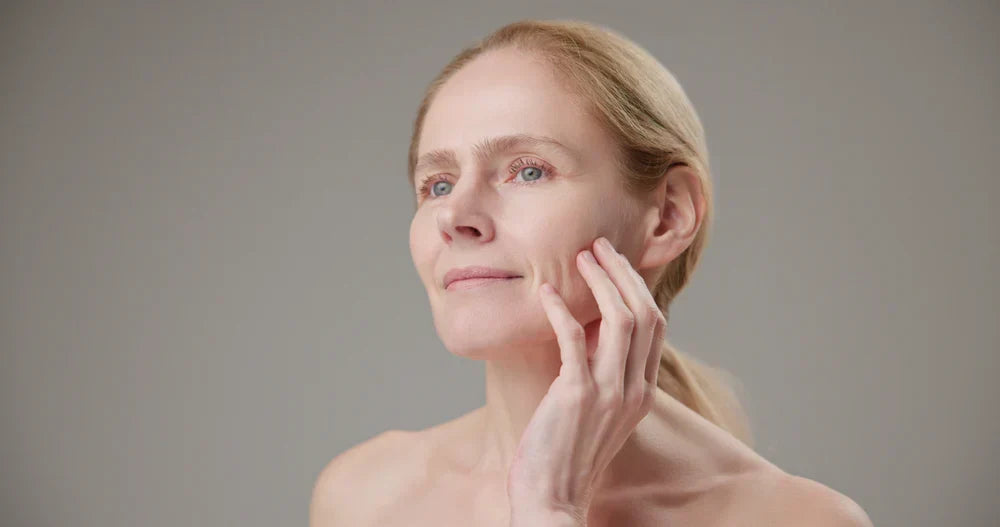
What is the Best Skincare Routine for Mature Skin?
Mature skin has unique needs that require special attention and a tailored skincare approach. As we age, the skin undergoes changes such as loss of elasticity, reduced collagen production, and decreased moisture retention. These changes can lead to dryness, fine lines, wrinkles, and a less radiant complexion. To address these concerns effectively, consult a professional skincare provider to establish a skincare routine that supports the skin’s evolving requirements.
In this guide, we’ll explore the best skincare routine for mature skin, including key ingredients and step-by-step recommendations. For personalized skincare plans, it’s important to consult a qualified professional who can recommend tailored treatments that best suit your skin’s needs.
What are the Best Anti-Ageing Skincare Ingredients?
The right ingredients are key to building the best skincare routine for mature skin. Always consult a skincare professional when selecting products, as they can advise you on the best choices for your individual skin type and needs.
Retinol
Retinol is a derivative of vitamin A that stimulates collagen production and accelerates cell turnover. It is essential to seek professional advice before using retinol to ensure it's used correctly and safely in your routine, as retinol can cause irritation if not used properly.
Hyaluronic Acid
Hyaluronic acid is a powerful humectant that attracts and retains moisture in the skin, providing deep hydration. Consult a professional to find the best products for your skin type and condition to avoid potential irritation.
Vitamin C
Vitamin C is a potent antioxidant that protects the skin from environmental damage, such as UV rays and pollution. It also brightens the complexion and supports collagen synthesis for firmer skin. For optimal use, seek professional guidance to ensure it works best with other elements of your skincare routine.
Peptides
Peptides are small molecules that send signals to skin cells to promote the production of collagen and elastin, enhancing skin elasticity and reducing signs of ageing. Consult a professional to determine the right peptide products for your skin.
Niacinamide
Niacinamide, also known as vitamin B3, is a versatile ingredient that helps improve skin tone, texture, and elasticity. It reduces redness, minimises pores, and strengthens the skin barrier. As with all skincare products, it’s essential to seek professional advice before starting any new treatment to ensure it’s right for your skin.
Additional Reading
-
Complete Guide to Vitamin C for Skin: Brightening, Benefits & Best Products
-
Ceramides: Strengthening the Skin Barrier & Boosting Hydration for Healthy Skin
---
About the Author
Nicky Lurie is a skin therapist with over 20 years of experience, specialising in medical aesthetics. She supports both our surgical and aesthetic services by delivering customised skincare solutions using medical-grade treatments. Nicky’s expertise ensures clients receive effective, evidence-backed products tailored to their specific needs, from acne to ageing.

How To Stimulate Collagen Production in the Skin
Supporting Collagen Production in Skin
Collagen is one of the most abundant proteins in the human body, playing a key role in skin structure and firmness. Over time, natural collagen production tends to decrease, which may contribute to visible signs of ageing such as wrinkles or reduced skin elasticity. Understanding how collagen functions — and how to support its maintenance — can help guide decisions around skincare, diet, and professional treatment options.
What is Collagen?
Collagen is a structural protein that contributes to the skin’s firmness, resilience, and overall integrity. It works alongside elastin and hyaluronic acid to maintain the skin’s natural strength and hydration. As we age, collagen production gradually decreases, which may result in changes such as fine lines, sagging, and reduced skin density.
Common Contributors to Collagen Reduction
Several factors may affect the natural balance of collagen in the skin:
-
Ageing and hormonal changes
-
Environmental factors, including UV exposure and pollution
-
Lifestyle choices, such as smoking, poor nutrition, and insufficient sleep
A qualified healthcare professional can help assess individual skin needs and recommend appropriate strategies for supporting skin health.
Options That May Support Collagen Production
Collagen support may be approached through a combination of lifestyle strategies, skincare practices, and professional treatments. The following are general methods that some individuals consider in consultation with their practitioner:
1. Topical Skincare Ingredients
Certain skincare ingredients may help support skin structure when used regularly and appropriately. These may include:
-
Retinol (Vitamin A derivatives) – May support cell turnover and collagen activity
-
Vitamin C – An antioxidant that may assist in collagen synthesis
-
Peptides – Short-chain proteins that may support skin structure
Before introducing active ingredients, it is advisable to consult a qualified practitioner to ensure suitability for your skin type.
2. Non-Surgical Aesthetic Treatments
A variety of cosmetic treatments are available that may promote collagen production by stimulating the skin’s natural response. These include:
-
Microneedling
-
Laser treatments
-
Radiofrequency (RF) therapy
-
High-intensity focused ultrasound (HIFU)
These treatments should always be performed by a qualified practitioner and require a consultation to determine suitability, risks, and expected outcomes.
3. Nutrition and Supplementation
A diet rich in Vitamin C, zinc, copper, and amino acids may support natural collagen synthesis. Common dietary sources include:
-
Citrus fruits and berries
-
Leafy greens
-
Nuts and seeds
-
Fish and shellfish
Collagen supplements are also widely available. Evidence supporting their benefits is still emerging, and it's important to seek advice from a healthcare provider before beginning any supplement regimen.
4. Lifestyle Considerations
Making healthy lifestyle choices can also contribute to maintaining skin health:
-
Using sun protection daily to minimise UV damage
-
Avoiding smoking and excessive alcohol consumption
-
Managing stress and ensuring adequate sleep
-
Staying hydrated and eating a balanced diet
These practices may support the overall condition of the skin and help maintain its structure over time.
Final Thoughts
Supporting collagen production is a multi-dimensional approach that may include skincare, professional treatments, nutrition, and lifestyle. It's essential to consult a qualified health practitioner to assess your skin condition and determine the best options for your individual needs.
Interested in Professional Advice?
At Shape Clinic, our team offers personalised consultations to help guide treatment planning and skincare choices. We take a tailored, evidence-based approach to support your individual skin goals.
To learn more or book a consultation, contact Shape Clinic.
Disclaimer: All medical and cosmetic procedures carry risks. Individual results vary. A consultation with a qualified health practitioner is required to determine the most appropriate treatment for your needs.
Additional Reading
---
About the Author
Nicky Lurie is a skin therapist with over 20 years of experience, specialising in medical aesthetics. She supports both our surgical and aesthetic services by delivering customised skincare solutions using medical-grade treatments. Nicky’s expertise ensures clients receive effective, evidence-backed products tailored to their specific needs, from acne to ageing.
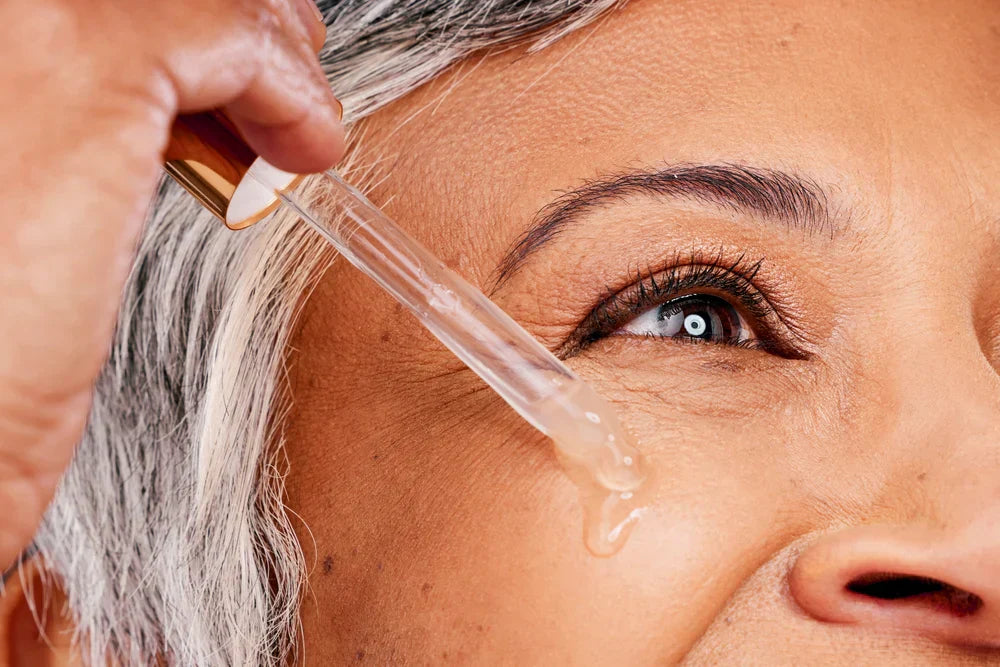
What is Retinol and What Does it Do?
Retinol is a powerful skincare ingredient derived from vitamin A, renowned for its ability to address multiple skin concerns. Please consult a qualified skincare professional before using retinol to ensure its suitability for your skin. It promotes cell turnover, stimulates collagen production, and helps regulate oil levels, making it effective for reducing fine lines, wrinkles, acne, and uneven skin texture. Retinol should be used under professional guidance to minimise the risk of irritation or adverse reactions.
Retinol vs. Retinoids
Retinol belongs to the broader family of retinoids, which also includes retinaldehyde and prescription-strength retinoic acid (tretinoin). The key difference between them is their potency and how quickly they act on the skin. Retinol is less potent and undergoes a conversion process in the skin, making it ideal for those new to retinoids. It is advised to use retinoids under the guidance of a healthcare professional to ensure safe and effective results.
How Does Retinol Work on the Skin?
Retinol works by penetrating the skin, where it stimulates cell turnover and promotes collagen and elastin production. Please consult with a professional to ensure you use retinol in a way that complements your skincare routine and needs. By enhancing the skin’s texture, retinol smooths fine lines and wrinkles, refines texture, and evens skin tone. Its ability to regulate oil production also makes it effective for managing acne-prone skin.
Benefits of Retinol: What Does Retinol Do for the Skin?
Retinol offers a variety of benefits, making it a key ingredient in many skincare products:
- Reduces Fine Lines and Wrinkles: Retinol stimulates collagen production, which may help firm the skin and smooth fine lines and wrinkles. Consult with a professional for advice on the best use of retinol for anti-ageing.
- Improves Skin Texture and Tone: By promoting cell turnover, retinol reduces roughness and evens out skin tone, leaving a smoother, more refined complexion. Consult a professional for advice on how to incorporate retinol into your routine to target uneven texture.
- May Minimises Acne and Acne Scarring: Retinol may help clear congested pores, reduces breakouts, and promotes skin regeneration to reduce acne scars. Always consult with a professional for acne treatment advice to avoid irritation.
- Increases Cell Turnover: Accelerated cell renewal brightens the skin and helps to reduce hyperpigmentation and sunspots over time. Consult with a professional to ensure the right retinol product for your skin type.
Additional Reading
---
About the Author
Nicky Lurie is a skin therapist with over 20 years of experience, specialising in medical aesthetics. She supports both our surgical and aesthetic services by delivering customised skincare solutions using medical-grade treatments. Nicky’s expertise ensures clients receive effective, evidence-backed products tailored to their specific needs, from acne to ageing.
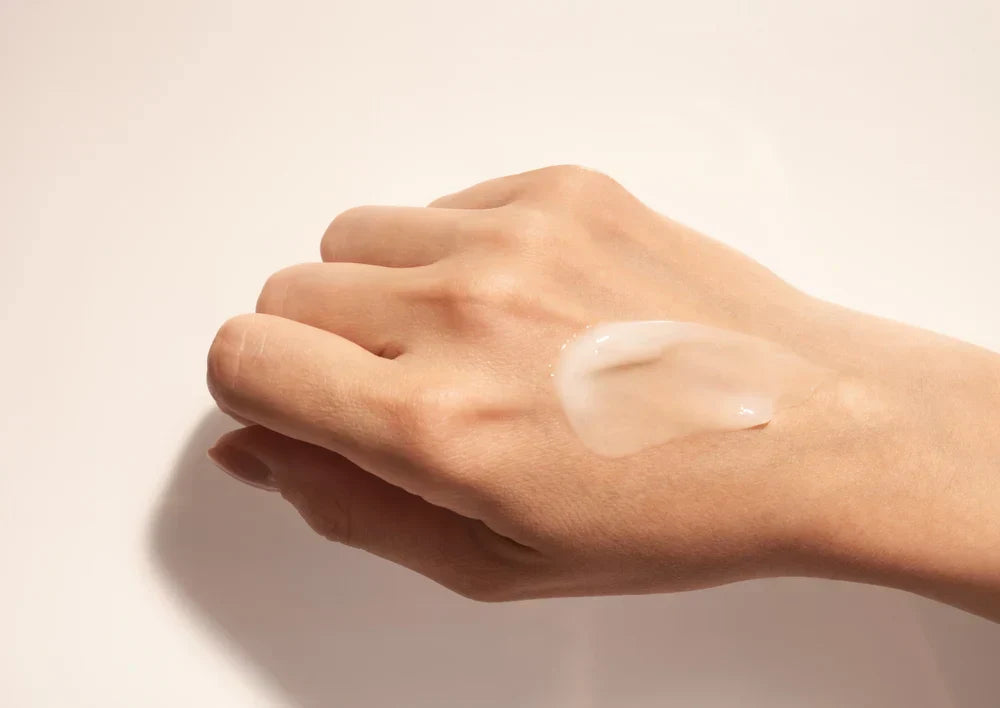
Ceramides: Strengthening the Skin Barrier & Boosting Hydration for Healthy Skin
Ceramides are an essential ingredient in skincare, known for their role in maintaining the skin's natural barrier. These naturally occurring lipids (fats) help to keep the skin hydrated, calm, and resilient. If you struggle with dryness, irritation, or sensitivity, adding ceramides to your skincare routine can provide noticeable benefits. At Shape Clinic, we recommend targeted ceramide-rich treatments and products like SkinCeuticals Triple Lipid Restore 2:4:2 to repair and rejuvenate the skin barrier effectively. Please consult with a skincare professional to ensure this product is suitable for your skin type and condition.
What Are Ceramides and Why Are They Essential for Healthy Skin?
Ceramides are naturally occurring lipids that make up over 50% of the skin’s outermost layer, the stratum corneum. Acting as the “mortar” that holds the “bricks” (skin cells) together, they maintain the skin’s structure and prevent moisture loss.
A healthy level of ceramides is essential for maintaining hydration, strengthening the skin barrier, and protecting against environmental stressors. Without sufficient ceramides, the skin barrier becomes compromised, leading to dryness, sensitivity, and irritation. Always consult your skincare professional to evaluate your skin's needs before beginning any new treatment or skincare routine. (PubMed).
The Science Behind Ceramides: How Ceramides Work on Skin
Ceramides form a protective layer on the skin, locking in moisture and preventing the penetration of pollutants, allergens, and harmful microbes. They also play a critical role in preserving the skin’s structural integrity and boosting its ability to repair itself (Springer).
When ceramide levels decrease—due to ageing, environmental factors, or overuse of harsh skincare products—the skin becomes vulnerable to damage, irritation, and dehydration. Always consult with a licensed practitioner before starting any new products, especially if your skin is prone to irritation (PubMed).
The Key Benefits of Ceramides for Your Skin: What Are Ceramides in Skincare Really Doing?
Hydration & Moisture Retention
Ceramides are essential for dry or dehydrated skin, as they help strengthen the skin's natural barrier and prevent trans-epidermal water loss (TEWL). By replenishing ceramides, the skin retains vital moisture, resulting in improved hydration and a smoother texture (PubMed).
Repairing the Skin Barrier
A compromised skin barrier—often due to over-exfoliation, harsh products, or environmental factors—can lead to irritation and dryness. Ceramides restore this protective layer, reducing sensitivity and enhancing the skin's resilience against external stressors (Health Cleveland Clinic).
Protection Against Irritation
Ceramides have calming properties that soothe redness and inflammation, making them particularly effective for sensitive or acne-prone skin. They also help alleviate symptoms associated with conditions like eczema by reducing inflammation and strengthening the skin barrier (PubMed).
Anti-Ageing Benefits
As ceramide levels decline with age, replenishing them can help maintain moisture, elasticity, and a youthful appearance. By keeping the skin hydrated and reducing water loss, ceramides diminish the visibility of fine lines and wrinkles, giving the skin a smoother, plumper look (PubMed).
How to Incorporate Ceramides into Your Skincare Routine
Ceramides are versatile and found in a variety of skincare products, including creams, serums, and cleansers. Among these, moisturisers are particularly effective as they lock in hydration and actively support the repair of damaged skin barriers. To maximise their benefits, ceramide-rich products should be used as the final step in your skincare routine—after cleansing and applying serums—to seal in moisture and strengthen the skin's protective layer.
At Shape Clinic, we recommend the following expertly formulated ceramide-rich products:
- SkinCeuticals Triple Lipid Restore 2:4:2: This luxurious cream is designed to restore skin barrier function, enhance hydration, and improve texture, making it ideal for dry or ageing skin.
- SkinBetter Science Trio Rebalancing Moisturiser: A lightweight formulation that delivers long-lasting hydration by combining ceramides with other nourishing ingredients, perfect for those with combination or oily skin.
Both products work effectively to fortify the skin’s barrier and maintain its natural resilience. Please consult with your skincare professional to determine the suitability of these products for your skin type.
Combining Ceramides with Other Ingredients
Ceramides work synergistically with other skincare ingredients to maximise their efficacy and provide comprehensive benefits:
- Hyaluronic Acid Serums: Intensifies hydration by attracting water to the skin, complementing ceramides’ ability to lock in moisture.
Additional Reading
---
About the Author
Nicky Lurie is a skin therapist with over 20 years of experience, specialising in medical aesthetics. She supports both our surgical and aesthetic services by delivering customised skincare solutions using medical-grade treatments. Nicky’s expertise ensures clients receive effective, evidence-backed products tailored to their specific needs, from acne to ageing.
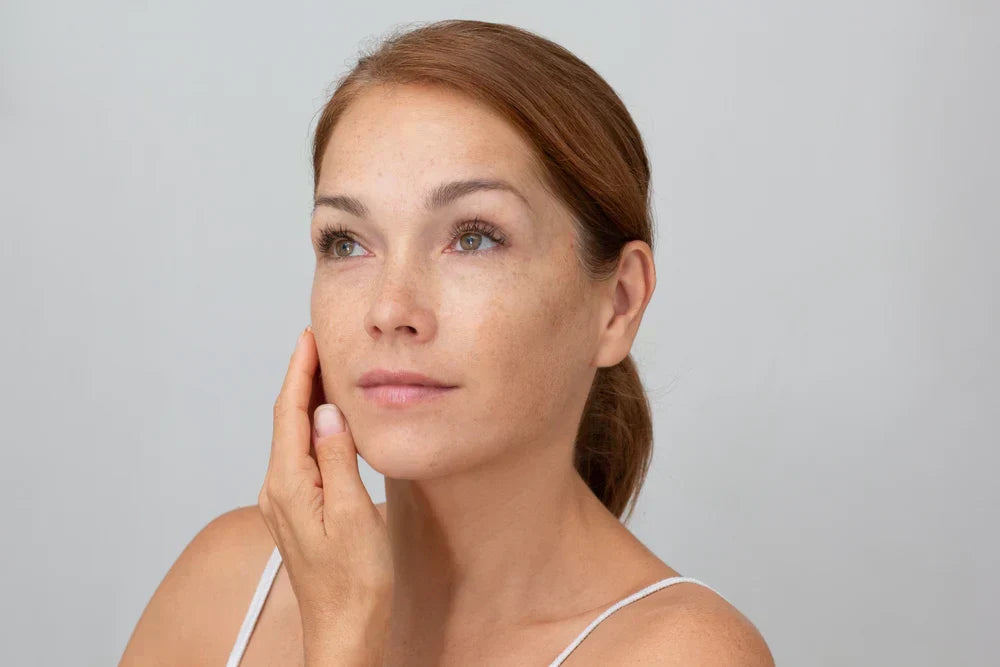
How To Remove Dark Spots From Face
Key Takeaways
- Dark spots, also called hyperpigmentation, happen when skin makes excess melanin. The most common triggers are sun exposure, hormones, inflammation, and genetics.
-
Daily sunscreen is non-negotiable. Consistent SPF is the single best way to prevent and slow pigmentation, then layer proven actives like vitamin C, retinoids, niacinamide, and tranexamic acid. Consider exploring Sun Protection and Vitamin C products for easy routine building.
- Different types need different strategies. Melasma benefits from pigment-suppressing serums and strict UV protection, while sun spots respond well to targeted antioxidants and professional exfoliation.
Dark spots are one of the most common concerns we see in clinic. Whether yours appeared after a breakout, pregnancy, or a long summer outdoors, hyperpigmentation can make skin look uneven and dull. The good news is that with a precise routine, patience, and daily sun protection, most dark spots can be meaningfully improved.
At Shape Clinic, our approach is patient-first and evidence-led. We pair medical-grade skincare with in-clinic care when needed, and we stock only formulations we trust. This guide explains what causes dark spots, how to choose the right at-home routine, and when to consider professional treatments. Throughout, you will find clear opportunities to explore our Pigmentation & Dullness, Vitamin C Products, Sun Damage, Moisturisers, Cleansers, and Sun Protection collections so you can build a results-driven regimen that suits your skin.
What Are Dark Spots?
Dark spots are areas of excess melanin that appear darker than the surrounding skin. They can show up as small freckles, larger sun spots, or patchy, map-like areas such as melasma. While anyone can develop hyperpigmentation, it tends to be more persistent for medium to deep skin tones, and it can recur without consistent prevention.
The main types you may notice:
- Melasma: Often triggered by hormones and UV exposure, commonly on the cheeks, forehead, and upper lip.
- Post-inflammatory hyperpigmentation (PIH): Left behind after acne, eczema, bug bites, or procedures if skin is not fully protected.
- Sun spots or solar lentigines: Caused by cumulative UV exposure over time.
- Freckles: Usually genetic, and they darken with sun.
Causes Of Dark Spots On Skin
Understanding your triggers helps you choose the right products and habits.
-
Sun exposure: UV light is the number one driver of pigmentation, which is why SPF every day is essential. Browse our Sun Protection edit to find a texture you will enjoy wearing daily.
- Hormonal changes: Pregnancy, oral contraceptives, and hormonal fluctuations can spark melasma.
- Inflammation: Breakouts, rashes, or over-exfoliation can leave lingering marks known as PIH.
- Medications: Certain drugs can increase pigment production.
- Genetics: Some people are simply more prone to freckles and sun-induced pigmentation.
How To Use Your Routine To Fade Dark Spots
A smart routine combines brightening actives with barrier-supporting care and unwavering UV protection. Build with these steps.
1) Cleanse gently
Use a non-stripping cleanser morning and night to remove impurities without aggravating skin. If your skin is easily sensitised, consider Universkin Universal Cleansing Olive Oil for a balanced, minimal approach, or the SkinCeuticals Simply Clean Gel Cleanser from our Cleansers collection.
2) Antioxidant serum in the morning
Vitamin C helps defend against UV-induced free radical damage and supports a brighter, more even tone over time. Explore our Vitamin C products collection to compare textures and strengths that fit your skin type.
3) Targeted pigment corrector
Layer a dedicated serum that suppresses pigment at multiple steps in the melanin pathway. Options with tranexamic acid, niacinamide, kojic acid, and arbutin are excellent for most forms of hyperpigmentation. For example, SkinCeuticals Dark Spot Corrector combines tranexamic acid, kojic acid, niacinamide, and HEPES to visibly improve uneven tone.
4) Night-time renewal
Retinoids and gentle chemical exfoliants support cell turnover, which helps gradually disperse surface pigment. Start two to three nights a week and increase as tolerated. You will find retinol options and overnight exfoliating care within our Serums collection.
5) Moisturise wisely
Choose a barrier-supporting moisturiser that keeps skin calm and hydrated. A strong barrier reduces inflammation that can worsen PIH. See our Moisturisers collection for options that pair well with active serums.
6) SPF every single morning
UV exposure will undo progress. Apply a broad-spectrum SPF 50 generously, and reapply when outdoors. Our Sun Protection and Airyday collections feature elegant daily formulas that make compliance easy.
Common Questions
What causes dark spots on skin?
Dark spots occur when melanocytes make excess melanin due to triggers like sunlight, hormones, inflammation, or certain medications. Anyone can be affected, although patterns and persistence vary by skin tone. Keeping inflammation low and UV exposure controlled is crucial.
How can we remove dark spots on the face?
Consistency is everything. Combine daily SPF with a brightening antioxidant in the morning and a dedicated pigment-correcting serum. Retinoids and gentle chemical exfoliation at night help speed cell turnover. If pigment is stubborn, book a consultation to discuss professional options like chemical peels or energy-based treatments performed by qualified practitioners for your skin type.
Are melasma and sun spots the same?
No. Melasma is usually hormonally driven and appears as symmetrical patches that easily rebound with sunlight. Sun spots are discrete, UV-induced marks that build with cumulative exposure. Both improve with pigment-suppressing skincare and diligent SPF, but melasma typically requires stricter UV avoidance and longer maintenance.
Who should use pigment-correcting serums?
Most skin types with uneven tone, PIH, sun spots, or melasma will benefit from daily use of a corrective serum, provided the formula suits their skin and is paired with SPF. Sensitive or compromised skin should start slowly, combine with a soothing moisturiser, and avoid over-exfoliation.
Who Should Use These Treatments?
- Melasma-prone or hormonally sensitive skin: Focus on pigment suppressors such as tranexamic acid and niacinamide, strict sun avoidance, and tinted SPF for visible light protection.
- Post-acne marks and PIH: Pair a gentle routine with antioxidants, niacinamide, and retinoids. Avoid picking and harsh scrubs.
- Sun-induced spots and general dullness: Vitamin C plus broad-spectrum SPF daily, with periodic exfoliation.
Expert Tips For Best Results
- Apply brightening serums to clean, dry skin and allow them to absorb for a minute before moisturiser.
- Use vitamin C in the morning, then a corrective serum morning or evening as directed.
- Introduce retinoids gradually to avoid irritation. If you are sensitive, start every third night and buffer with moisturiser.
- Reapply SPF, especially after sweating or swimming. Consider makeup or moisturisers with added sun filters for top-ups. Our Airyday options sit beautifully under or over makeup.
Keep expectations realistic. Pigment fades in weeks to months, and melasma often requires long-term maintenance.
Recommended Products
SkinCeuticals Discoloration Defense Dark Spot Corrector
This daily, layerable serum targets multiple steps of the pigment pathway to visibly reduce the look of dark spots and uneven tone in as little as two weeks. It features 3 percent tranexamic acid to help minimise persistent brown patches, 1 percent kojic acid for targeted brightening, 5 percent niacinamide to support barrier health and calm redness, and 5 percent HEPES to assist gentle exfoliation. Use morning or evening after cleansing and before moisturiser, always with SPF by day. Ideal for melasma-prone and post-blemish marks, and suitable for all skin tones.
SkinBetter Science Even Tone Correcting Serum
A hydroquinone-free corrector designed to brighten and even skin without retinol, making it a solid option for sensitive users or those cycling retinoids on alternate nights. The formula incorporates SkinBetter’s patented b.r.y.t. technology to address visible brown, red, and yellow tones that commonly accompany hyperpigmentation. Apply a thin layer to face, neck, and chest morning and night, then follow with moisturiser and SPF during the day. Pairs well with vitamin C in the morning and retinoids at night for a comprehensive routine.
Airyday SPF 50+ Bronze Glow Dreamscreen
The easiest way to protect progress is a sunscreen you love to wear. Airyday’s lightweight, glow-enhancing Dreamscreen textures make daily SPF feel like skincare. Choose Golden Glow for a soft-focus radiance or Bronze Glow for a sun-kissed tint that evens tone while you protect. Wear alone on no-makeup days or under foundation. Suitable for all skin types that prefer a comfortable, invisible finish.
Professional Treatments To Consider
For stubborn pigmentation, combining your home routine with clinic treatments can accelerate results. Options may include chemical peels, gentle resurfacing, or energy-based devices selected for your skin type and concerns. Proper assessment and practitioner experience are essential, especially for deeper skin tones and melasma, to limit the risk of post-inflammatory hyperpigmentation. Continue your at-home routine and daily SPF to maintain clarity between sessions.
Shape Clinic's Medical-Grade Skincare Can Help
Dark spots are common and treatable with the right plan. Start with consistent daily SPF, add proven brightening actives, and support your barrier so skin stays calm while you treat. For personalised guidance and product curation, Shape Clinic’s medical-grade range is carefully chosen by experts to deliver visible results.
Additional Reading
---
About the Author
Nicky Lurie is a skin therapist with over 20 years of experience, specialising in medical aesthetics. She supports both our surgical and aesthetic services by delivering customised skincare solutions using medical-grade treatments. Nicky’s expertise ensures clients receive effective, evidence-backed products tailored to their specific needs, from acne to ageing.
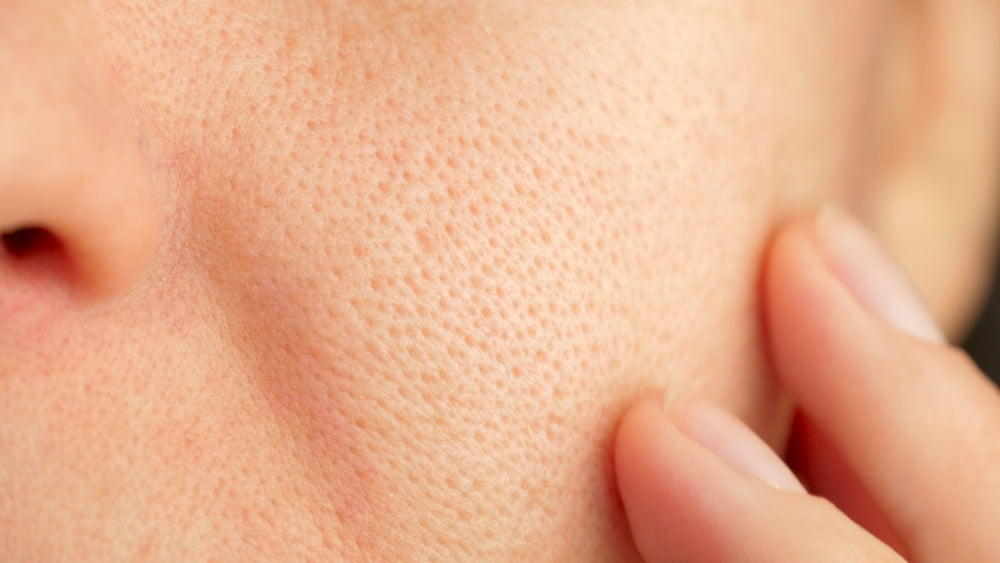
How to Repair a Damaged Skin Barrier (Fast & Safely)
Key Takeaways
- What: Your skin barrier (the outermost layer of the skin) keeps moisture in and irritants out. When it’s damaged, you’ll see dryness, stinging, redness and sensitivity.
- Why it matters: A compromised barrier can worsen concerns like acne, eczema and premature ageing; repairing it restores comfort, resilience and glow.
- How to repair/fix it: Simplify your routine, cleanse gently, hydrate and replenish lipids (ceramides, cholesterol, fatty acids), and wear SPF daily.
If your skin feels tight, looks shiny yet flaky, or stings when you apply products, your skin barrier may be compromised. Understanding how to repair a damaged skin barrier and how to prevent future flare ups can transform comfort and clarity. At Shape Clinic, we focus on medical grade skincare that is effective, well tolerated, and tailored to your concerns. This guide covers how to repair skin barrier, how to fix skin barrier safely, the key ingredients to prioritise, and the products our clinicians trust.
What Is the Skin Barrier?
The skin barrier is the stratum corneum, the protective outermost layer of the epidermis. Imagine a brick and mortar wall. The bricks are flattened skin cells called corneocytes. The mortar is a lipid mix made of ceramides, cholesterol, and fatty acids. Together, these keep water inside the skin while blocking irritants, pollution particles, and microbes. When the mortar thins or the bricks loosen, moisture escapes and irritants enter. The result is dryness, redness, stinging on application, and a rough, lacklustre texture.
What Causes Skin Barrier Damage?
A range of external and internal factors can weaken the barrier.
External factors
- Over cleansing or harsh surfactants: High pH cleansers and very hot water strip natural lipids.
- Over exfoliation: Too many acids, frequent scrubs, or layering actives without recovery time.
- Potent actives used too quickly: Retinoids, vitamin C, benzoyl peroxide, and multiple acids introduced all at once.
- UV exposure and pollution: Accelerate lipid depletion and inflammation.
- Dry environments: Air conditioning, heaters, and low humidity increase transepidermal water loss.
- Post procedure periods: After peels or lasers the barrier needs extra support.
Internal factors
- Ageing: Natural lipid decline and slower renewal reduce barrier function.
- Hormonal changes: Pregnancy, menopause, and menstrual fluctuations can increase reactivity.
- Skin conditions: Eczema, rosacea, and psoriasis involve inherent barrier impairment.
- Lifestyle: Stress, poor sleep, and low intake of healthy fats and antioxidants can impair repair.
Signs of a Damaged Skin Barrier
- Tightness and dryness that does not ease after moisturising
- Stinging or burning when applying products that were previously fine
- Redness, blotchiness, and a rough or sandpapery feel
- Flaking or micro peeling
- Breakouts with concurrent dehydration
- Makeup clinging to dry patches
If these persist, book a consultation with our clinical team for a personalised plan.
How to Repair a Damaged Skin Barrier
If you are asking how to repair skin barrier or how to fix skin barrier, use this calm reset for 2 to 4 weeks or as advised by your clinician.
-
Simplify your routine
Press pause on scrubs and strong actives such as AHAs, BHAs, and retinoids. Focus on four steps only: gentle cleanser, hydrating serum, lipid rich moisturiser, and SPF 50 plus. -
Cleanse gently and briefly
Choose a pH balanced, non stripping cleanser morning and night. Good options include SkinCeuticals Soothing Cleanser and Universkin Universal Cleansing Olive Oil Cleanser. -
Rehydrate straight after cleansing
On damp skin, apply a serum with hyaluronic acid, glycerin, and beta glucan. These humectants draw in water and soothe. -
Replenish lipids with the right ratios
Reach for moisturisers that deliver ceramides, cholesterol, and fatty acids. These mimic the skin’s natural mortar. Trusted choices include SkinCeuticals Triple Lipid Restore 2:4:2 and SkinBetter Science Trio Rebalancing Moisture Treatment. -
Protect every morning with SPF 50 plus
UV is a major barrier saboteur. Use a cosmetically elegant sunscreen that you are happy to reapply. We love Airyday Bronze Glow SPF 50+ or Golden Glow SPF 50+ Dreamscreen textures. -
Night care for severe dryness
For a few nights, apply a thin occlusive layer to the driest patches to reduce water loss while you sleep. Avoid heavy fragrance and essential oils during repair. -
Reduce friction and heat
Keep showers lukewarm, pat skin dry, and avoid rough towels or cleansing tools. Limit face steaming and very hot environments. -
Reintroduce actives slowly
When skin feels comfortable for 7 to 10 days, add back one active at a time. Start with niacinamide for barrier support, then a gentle vitamin C, then a retinoid. Begin with two to three nights per week. -
Lifestyle support
Aim for 7 to 9 hours of sleep, manage stress, drink adequate water, and include healthy fats and antioxidants in your diet. -
Know when to seek help
If irritation persists or you have eczema or rosacea, contact our clinicians. A tailored Universkin formula or in clinic plan can accelerate recovery.
Common Questions
How to repair skin barrier?
Adopt a gentle reset. Use a pH balanced hydrating cleanser, apply a humectant rich serum with hyaluronic acid and beta glucan, follow with a moisturiser that replenishes ceramides, cholesterol, and fatty acids, and finish with SPF 50 plus every morning. Keep the routine simple and consistent.
How to fix skin barrier fast?
There is no instant fix, yet comfort often improves in 1 to 2 weeks if you stop over exfoliating, use a lipid rich moisturiser twice daily, avoid fragrance and drying alcohols, and wear sunscreen diligently. For very dry patches, a thin occlusive layer at night for a few days can help.
What is the skin barrier?
It is the stratum corneum, a brick and mortar structure where corneocytes act as bricks and a lipid blend of ceramides, cholesterol, and fatty acids forms the mortar. This layer prevents moisture loss and blocks irritants.
What causes skin barrier damage?
Common triggers include harsh or frequent cleansing, over exfoliation, too many strong actives introduced too quickly, UV exposure, pollution, low humidity, stress, and underlying conditions such as eczema and rosacea.
Who Should Use a Barrier Repair Routine?
- Sensitive or reactive skin: Products sting or tingle and redness is frequent.
- Acne prone yet dehydrated skin: Breakouts appear with flaking and tightness.
- Post procedure skin: After peels and lasers, the barrier needs extra cushioning.
- Ageing skin: Increased dryness, roughness, and a weakened lipid matrix.
- Rosacea or eczema prone individuals: With clinician guidance to avoid triggers.
Consider medical grade staples from SkinCeuticals, SkinBetter Science, Universkin, Airyday, Medipeau, and Beachy Lash.
Expert Tips for Best Results
- Cleanse for 30 to 60 seconds with lukewarm water. Pat dry rather than rubbing.
- Sandwich stronger actives between layers of moisturiser when you reintroduce them.
- Choose niacinamide 2 to 5 percent to calm redness and support barrier lipids.
- Avoid fragrance, menthol, and drying alcohols during repair.
- Apply SPF 50 plus every morning and reapply when outdoors.
- Favour consistency over intensity. Gentle care every day produces better outcomes than sporadic strong treatments.
Recommended Products
SkinCeuticals Triple Lipid Restore 2:4:2 Moisturiser 48ml
This benchmark moisturiser targets visible signs of lipid depletion with a precise ratio of ceramides 2, cholesterol 4, and fatty acids 2. The creamy texture absorbs quickly and immediately softens roughness and tightness. With regular use, skin looks more radiant and feels more resilient, which is essential during barrier repair and in mature or post procedure skins. Apply morning and night after your hydrating serum.
SkinBetter Science Trio Rebalancing Moisture Treatment 50ml
Ideal for complexions that feel oily in places and dehydrated in others. Trio delivers sustained hydration while supporting barrier function without heaviness. It layers smoothly under SPF and makeup and works well when you begin to reintroduce gentle actives. Recommended for combination, normal, or sensitised skin that needs balance plus comfort. Use twice daily on face, neck, and chest.
Universkin Cleansing Oil & Airyday Bronze Glow SPF 50+ Dreamscreen
Start and finish strong. Universkin Cleansing Oil respects the skin’s pH and removes impurities without stripping, which is crucial when the barrier is already fragile. Follow each morning with Airyday Bronze Glow SPF 50+. These elegant sunscreens sit comfortably under makeup and help defend against UV induced dryness and irritation. Consistent cleansing that is gentle plus daily sun protection is the most reliable foundation for recovery.
Conclusion
Your skin barrier is both your shield and your hydration engine. If you are experiencing tightness, flaking, or stinging, adopt a less is more plan. Cleanse gently, replace lost water with humectants, rebuild the lipid mortar with ceramides, cholesterol, and fatty acids, and wear SPF 50 plus every day. For tailored advice, Shape Clinic offers clinician led routines and in clinic support. Explore our range of medical grade skincare to find the right solution for your skin.
Additional Reading
-
Ceramides: Strengthening the Skin Barrier & Boosting Hydration for Healthy Skin
-
What is a Gentle Cleanser? The Essential Secret to Calmer, Clearer Skin
---
About the Author
Nicky Lurie is a skin therapist with over 20 years of experience, specialising in medical aesthetics. She supports both our surgical and aesthetic services by delivering customised skincare solutions using medical-grade treatments. Nicky’s expertise ensures clients receive effective, evidence-backed products tailored to their specific needs, from acne to ageing.
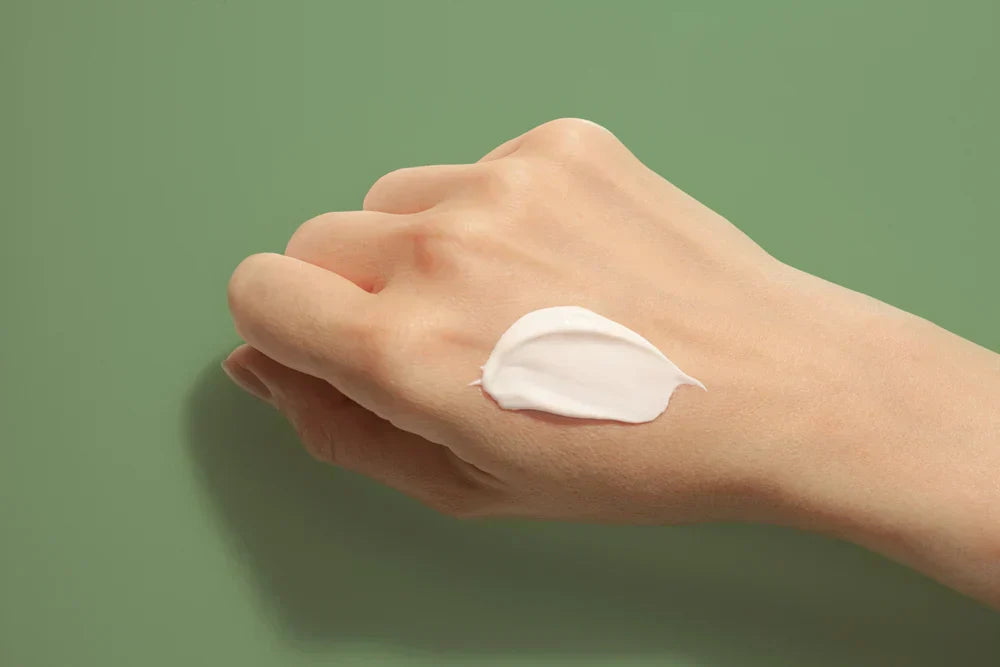
How to Use a Balm Cleanser: The Complete Guide
Key Takeaways
- Balm cleansers are nourishing, oil-based formulas that melt into the skin to remove makeup, sunscreen, and impurities without stripping.
- Apply balm cleansers to dry skin, massage gently, emulsify with water, and rinse, follow with a second cleanser if needed.
- Best suited for dry, sensitive, or makeup-wearing skin types, though all skin types can benefit when used as part of a double cleanse.
A truly effective skincare routine begins with the right cleanse. At Shape Clinic, we know the importance of starting with products that not only remove impurities but also respect your skin’s natural balance. Balm cleansers are one of the most indulgent yet effective ways to achieve this. If you’ve ever wondered what is a balm cleanser or how to use balm cleanser correctly, this guide will take you through everything you need to know, while highlighting some of the premium brands we recommend and stock at Shape Clinic.
What Is a Balm Cleanser?
A balm cleanser is a solid, oil-based formula that melts into the skin when massaged. Unlike some foaming cleansers that can strip away natural oils, balm cleansers provide a nourishing cleanse that’s ideal for removing SPF, makeup, and environmental pollutants.
One example is the Universkin O Cleanser, a gentle balm-like formula enriched with omegas and soothing active ingredients. It provides a nourishing cleanse, making it particularly suitable for dry or sensitive complexions. Similarly, SkinCeuticals Gentle Cleanser offers a mild cream-to-balm texture that’s loved for its ability to clean without irritation.
So, what is balm cleanser compared to a standard wash? It’s a richer, more replenishing option that supports the skin barrier while delivering an effective cleanse.
How to Use a Balm Cleanser
If you’ve searched how to use cleanser balm or how to use balm cleanser, here’s our expert-approved method:
- Start with dry skin. Scoop out a small amount of balm cleanser
- Warm between fingers. This allows the product to melt into an oil for easy application.
- Massage in circular motions. Apply to a dry skin and work in with gentle massage.
- Add water to emulsify. As the balm transforms into a light milk, it lifts impurities away.
- Rinse thoroughly. Use lukewarm water or a soft cloth for best results.
- Double cleanse (optional). Follow with a gel or foam cleanser such as SkinCeuticals Simply Clean.
Are Cleansing Balms and Oil Cleansers the Same?
A common question is: are cleansing balms the same as oil cleansers? The short answer: they’re similar but not identical.
Both rely on oils to dissolve impurities, but texture sets them apart. Balm cleansers start as a semi-solid balm that melts into a milky oil when applied, while oil cleansers are liquid from the start. This can make balm cleansers easier to handle, good for travel, and often more nourishing.
So if you’re asking is a cleansing balm the same as an oil cleanser, the answer is: not exactly. Balm cleansers give a richer experience, while oil cleansers may feel lighter.
Who Should Use a Balm Cleanser?
Balm cleansers suit most skin types (except oily/acne) but are particularly effective for:
- Dry or dehydrated skin. Use a hydrating follow-up like SkinCeuticals Triple Lipid Restore 2:4:2 after cleansing.
- Sensitive or compromised skin. Universkin O Cleanser is tailored for delicate, reactive skin.
- Makeup wearers. Balm cleansers excel at dissolving long-wear and waterproof products.
Expert Tips for Best Results
Use balm cleansers in the evening as your first step.
- Pair with targeted serums in the evening, such as SkinBetter Science AlphaRet for enhanced results.
- Finish with a barrier supporting moisturiser such as SkinBetter Science Trio Rebalancing Moisturiser.
- Always apply SPF in the morning. Shape Clinic recommends Airyday sunscreens for daily use
Shop with Shape Clinic for Medical Grade Skincare Products
If you’ve been asking how to use balm cleanser or wondering are cleansing balms and oil cleansers the same, the key is to choose a product that suits your skin’s needs. Balm cleansers are effective, gentle, and nourishing, making them an essential step in any evening skincare routine.
At Shape Clinic, we proudly stock world-leading brands such as Universkin, SkinCeuticals, SkinBetter Science, Airyday, Medipeau and TR Pro+. Each is hand-selected by our specialists to deliver visible, long-term results.
Explore our collection of balm cleansers and medical-grade skincare today at Shape Clinic, and discover how the right cleanse can transform your skin.
Additional Reading
-
What is a Gentle Cleanser? The Essential Secret to Calmer, Clearer Skin
-
Are Cream Cleansers Good? Find the Solution for Your Skin Type
---
About the Author
Nicky Lurie is a skin therapist with over 20 years of experience, specialising in medical aesthetics. She supports both our surgical and aesthetic services by delivering customised skincare solutions using medical-grade treatments. Nicky’s expertise ensures clients receive effective, evidence-backed products tailored to their specific needs, from acne to ageing.




